CT in Italy: Minimal graffiti art in situ
Surroundings and beginnings
CT was born in Turin, Italy, in 1985 and grew up in a small town outside the city. At the end of the 90s, he discovered graffiti writing through school friends who were tagging. In a skateboard shop in his town, he could buy some magazines full of graffiti and started doing sketches himself. His first monikers were MAIS, CERST and later CT, which sounds like “city”.
In 2003/2004 he started style writing and bombing with his friend KURZ and when he got his driven license, they started to paint all around Turin along the train lines. Their crew name was AMN (a modo nostro). At that time there were a few crews existing in Turin like KNZ, TOT, OTS and DYO. After 2005, CT started travelling, visiting other European cities and meeting style writers in Barcelona and Madrid. Back in Turin he started creating paste ups with his letters CT placed in urban space together with his writer friend KURZ. His geometric, graphic style of his name with only two letters evolved from there. The same year, he started his art studies at the Albertina Academy of Fine Arts in Turin, specializing in graphic works. For three years, he learned all about printing techniques, technical knowledge that he first applied for his paste ups and later for color transparencies in his pieces.
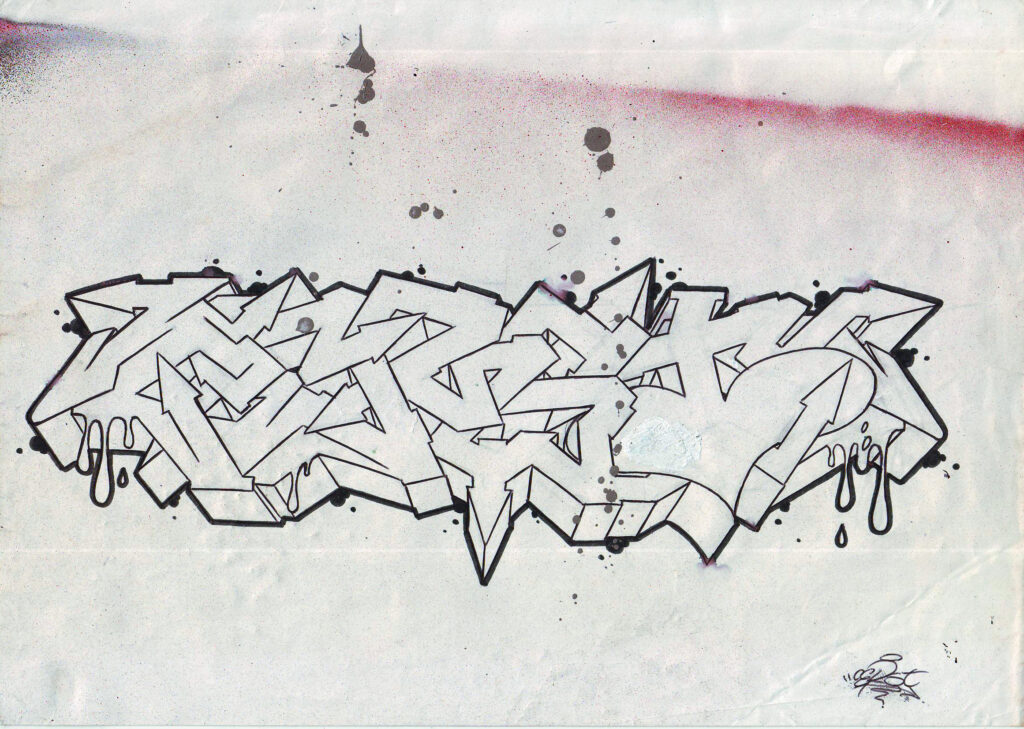
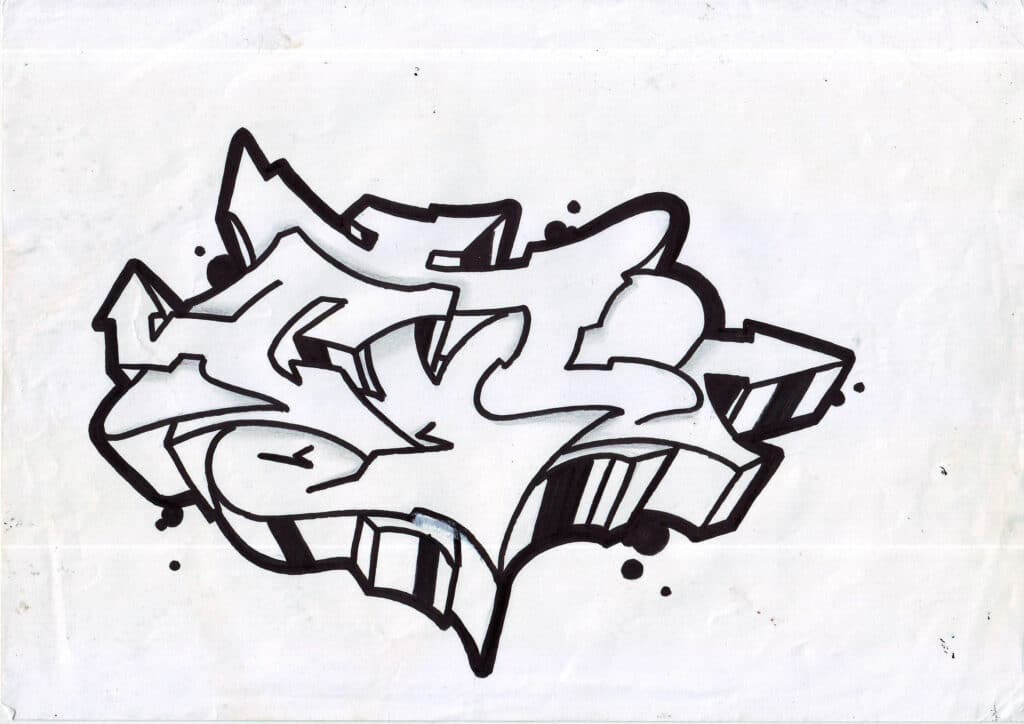
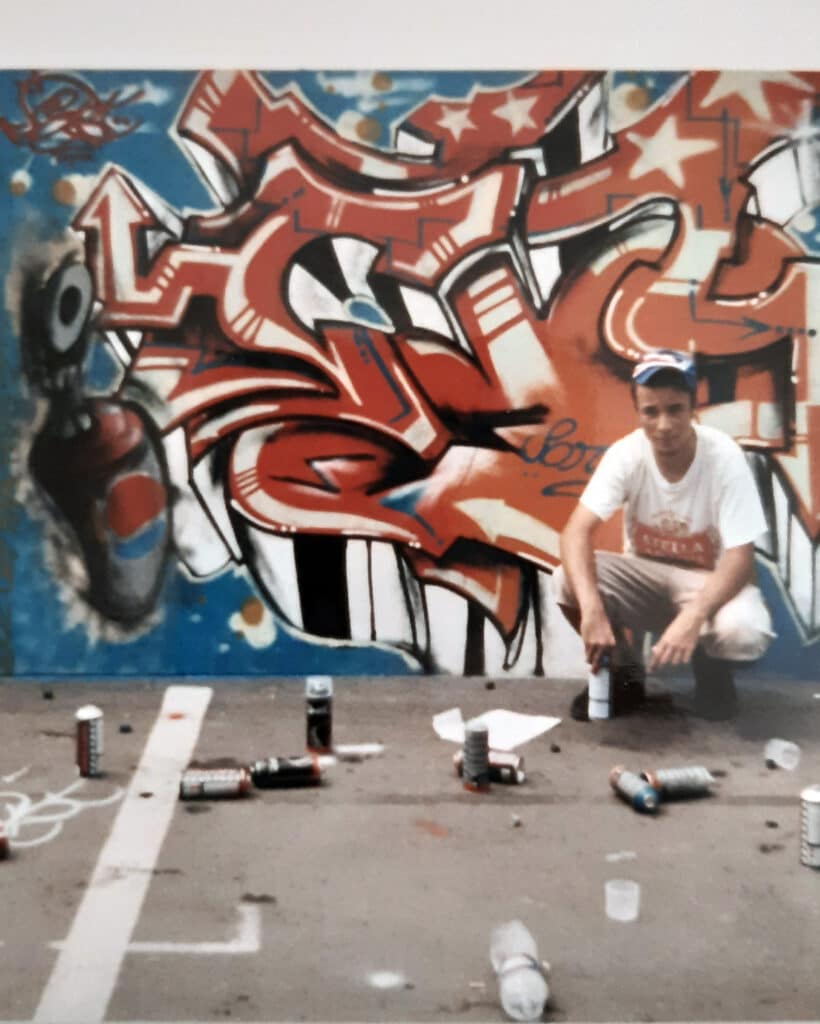
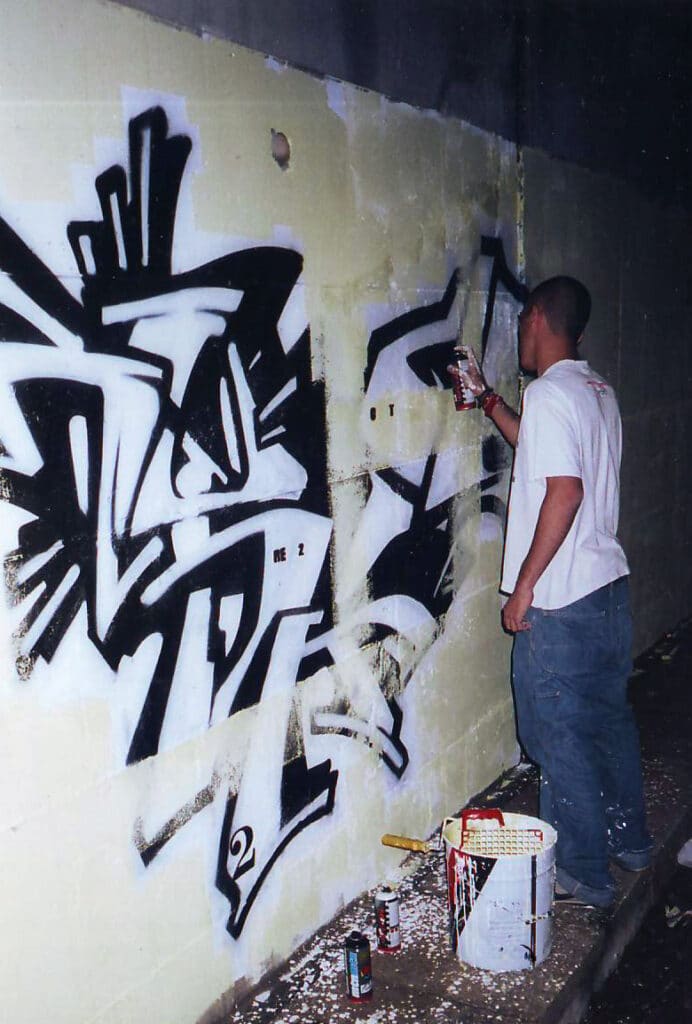
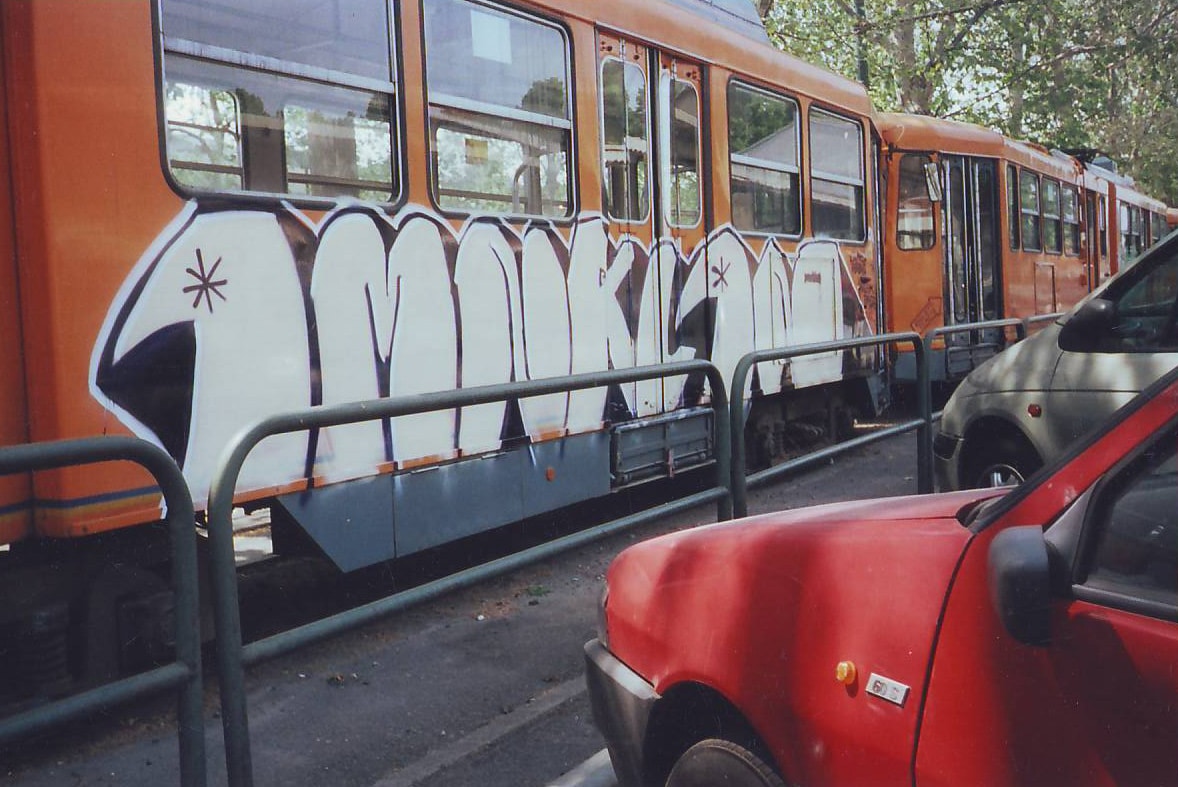
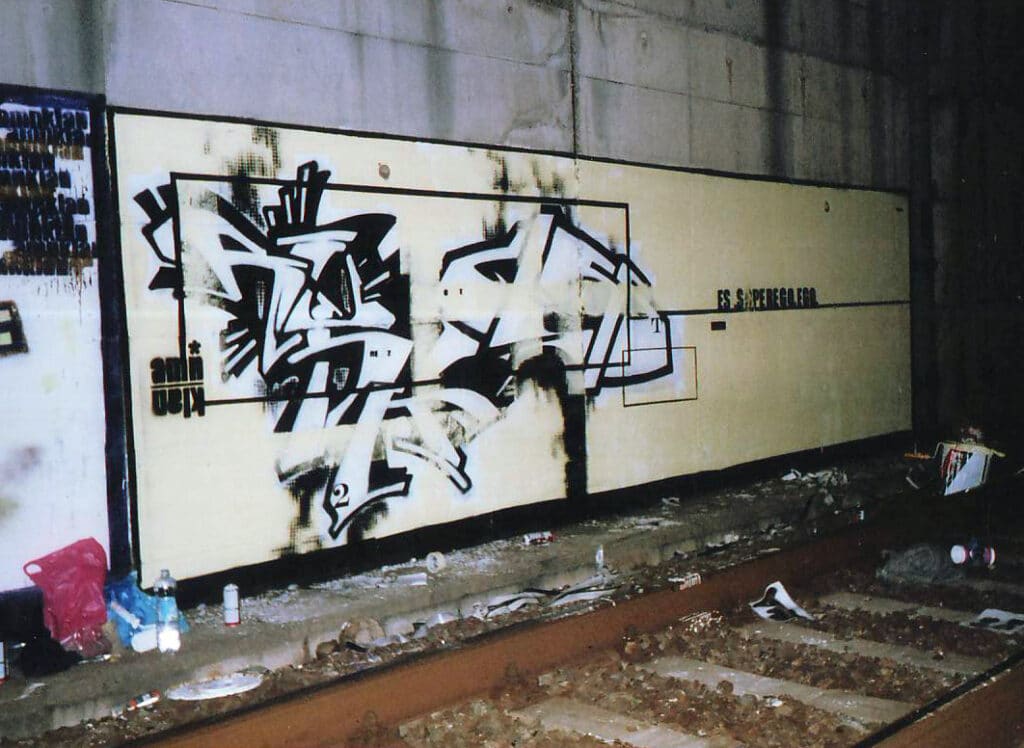
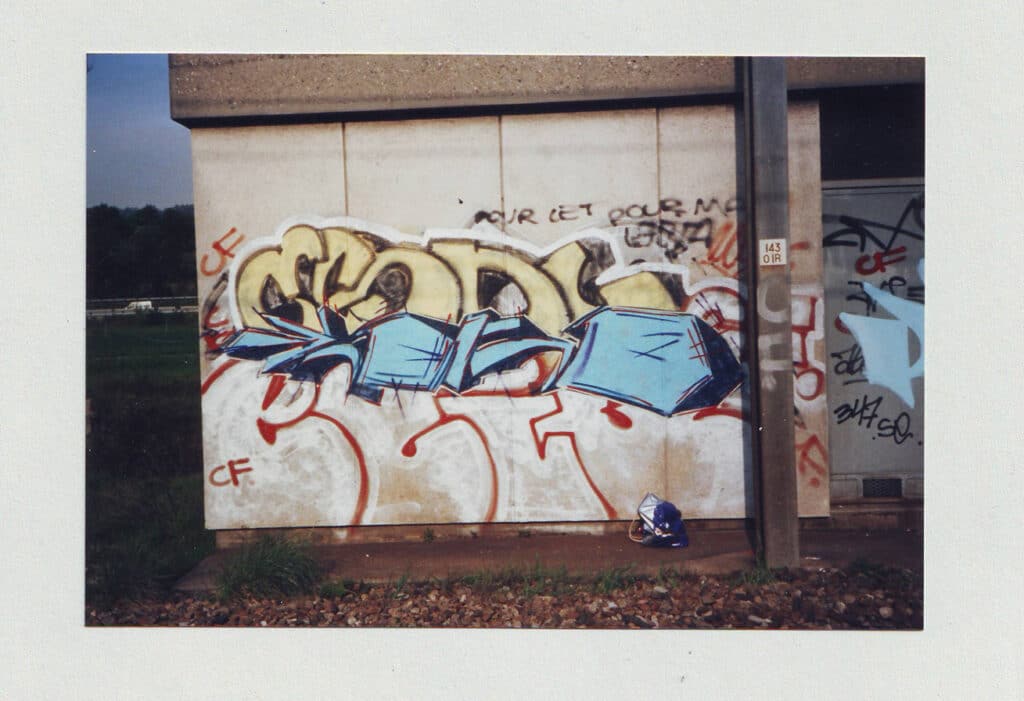
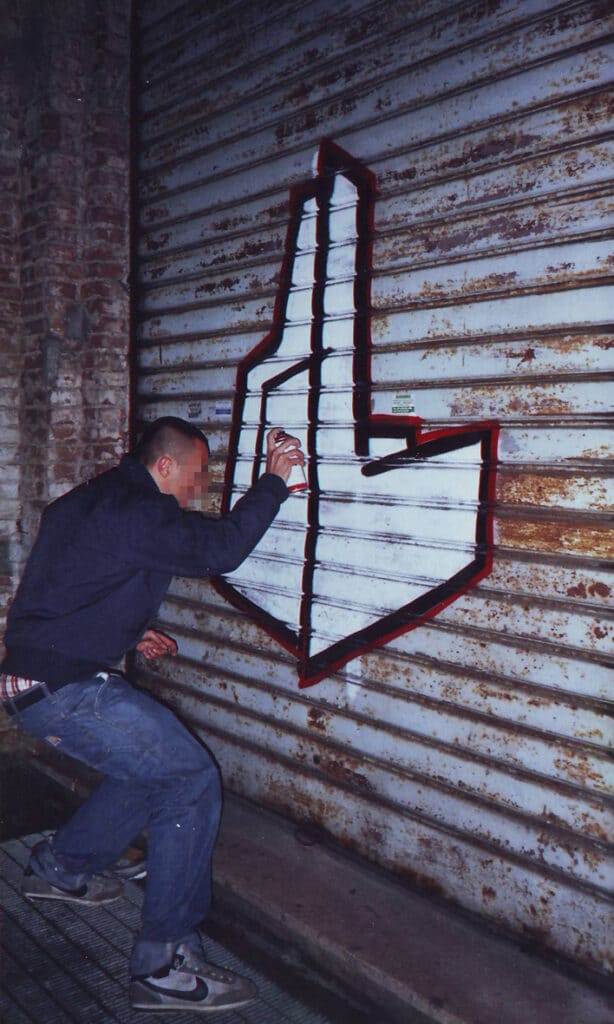
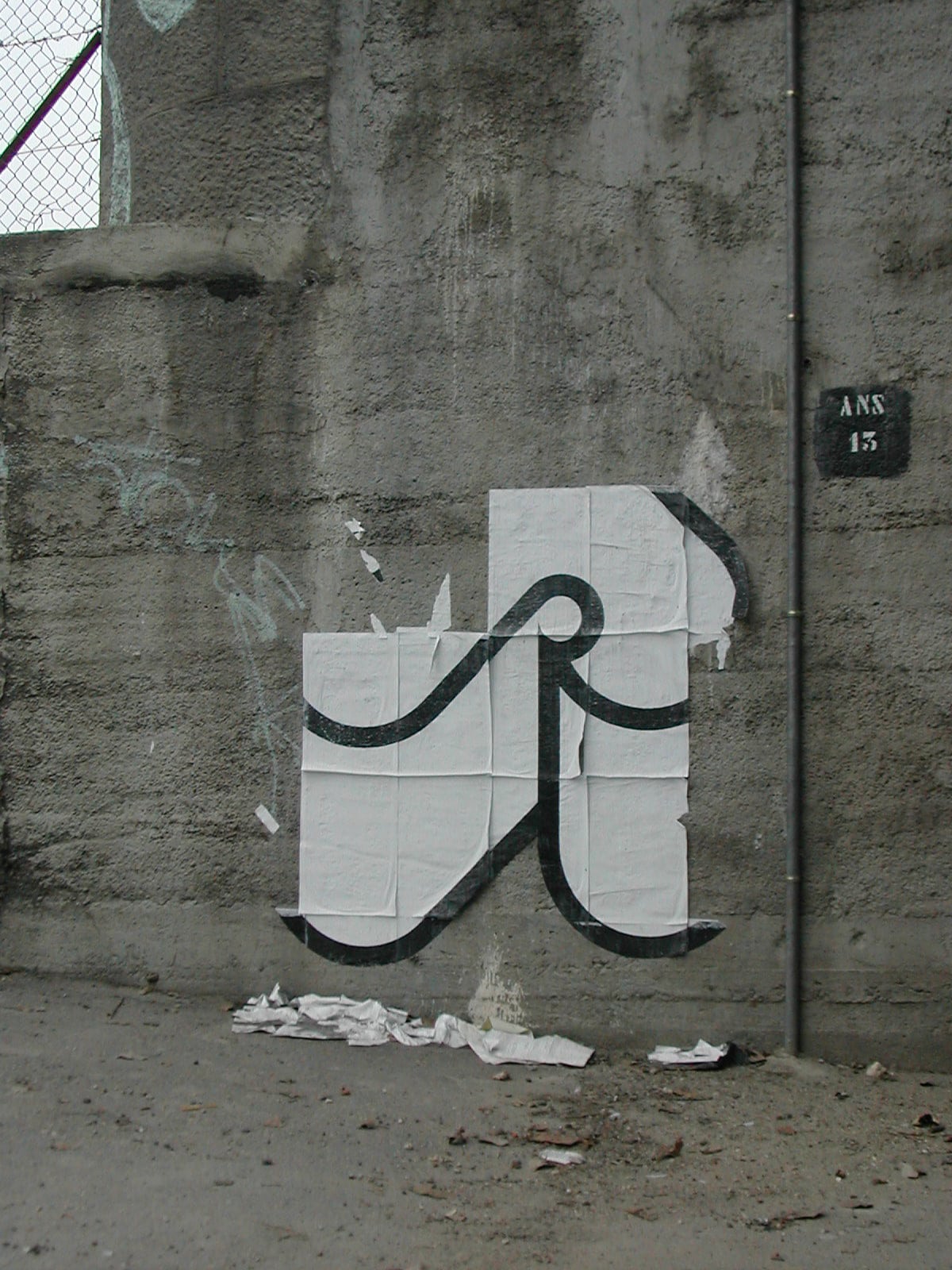
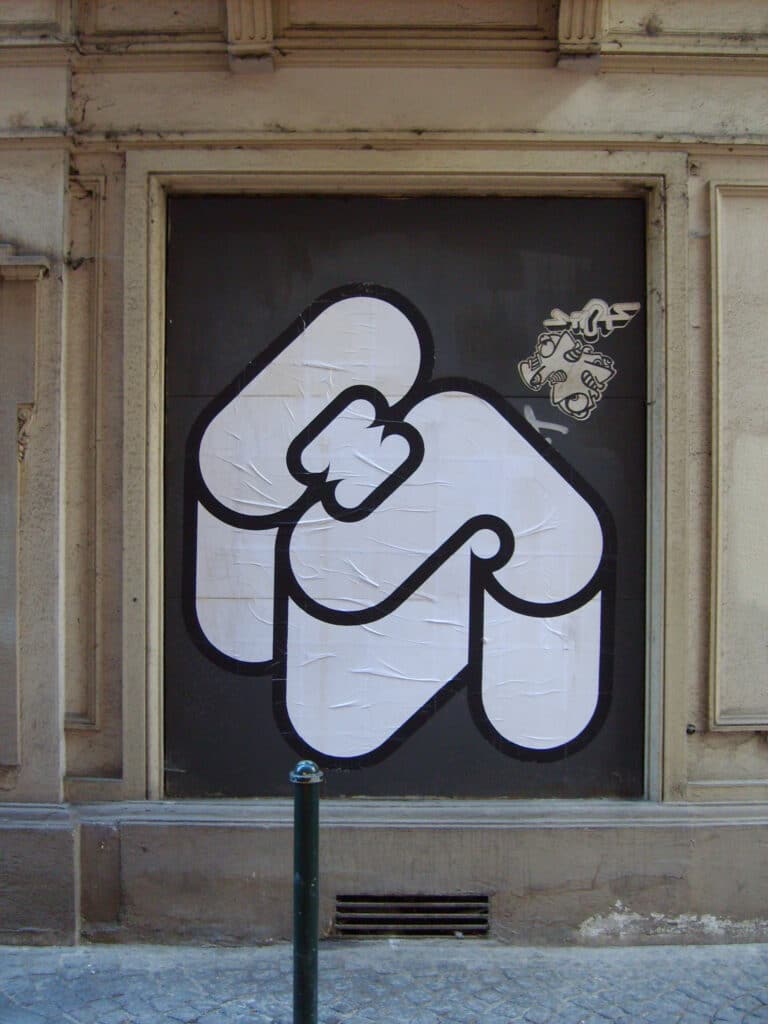
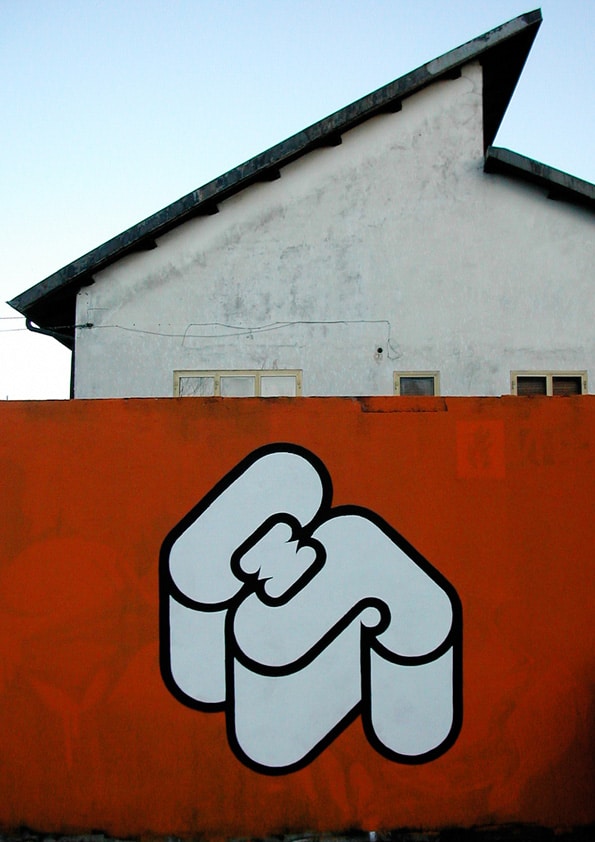
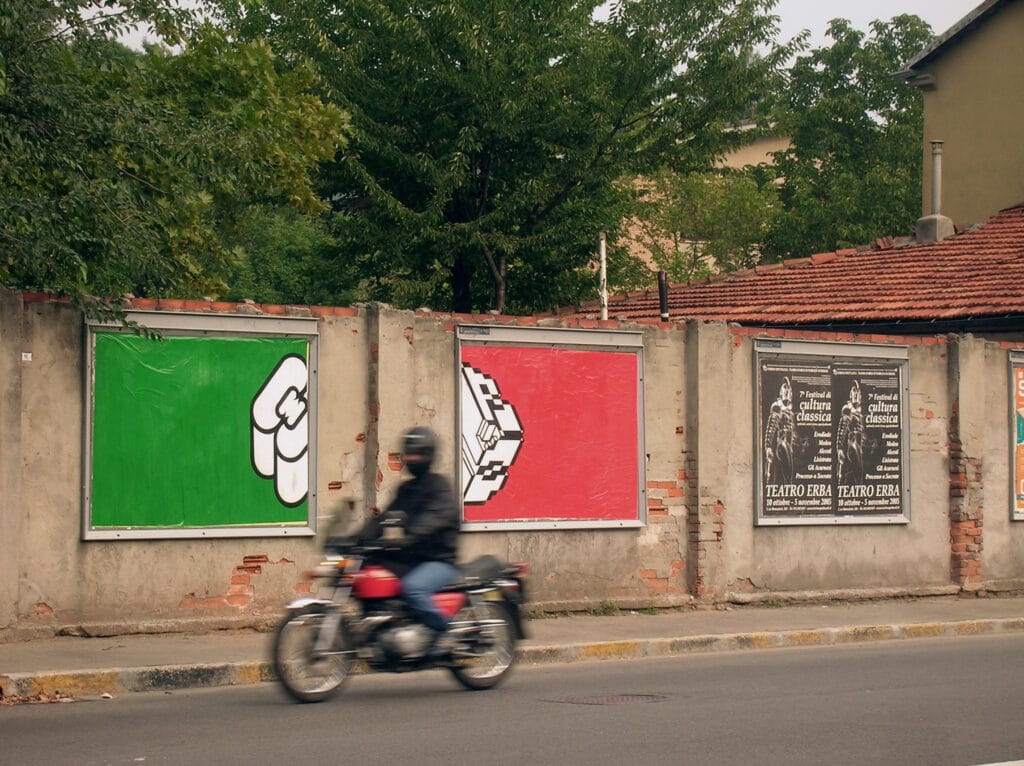
In 2006 CT started painting in lost places, abandoned factories, old houses etc. Until today, he is always first scoping his future spots, taking pictures and measurements of the wall before going back to paint a piece, that he always had sketched in advance. For his precise practice, he created tools for building his letter shapes. For getting a clean effect of his perfect shapes, he started using cardboard cut in positive forms of triangles, squares and circles in different sizes, from circa 20 cm to 70 cm. With those tools, he could build the sketch of the piece, then tape the outlines to do the fill in. CT describes in 2014 :„The modules are the quarter of a circle and the square, usually combined by two or three. “CT” is based on two quarter circles and seven squares. Every work of mine is made with the same amount of letters of CT: this is the strong bond that continues with the writing culture (…).“
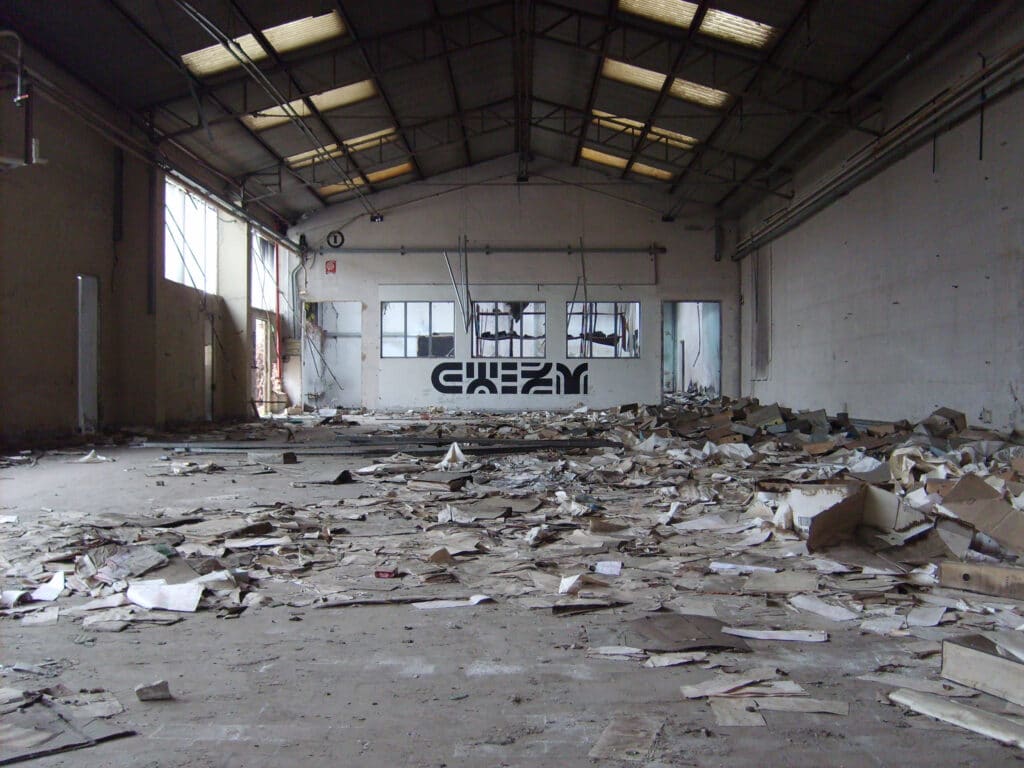
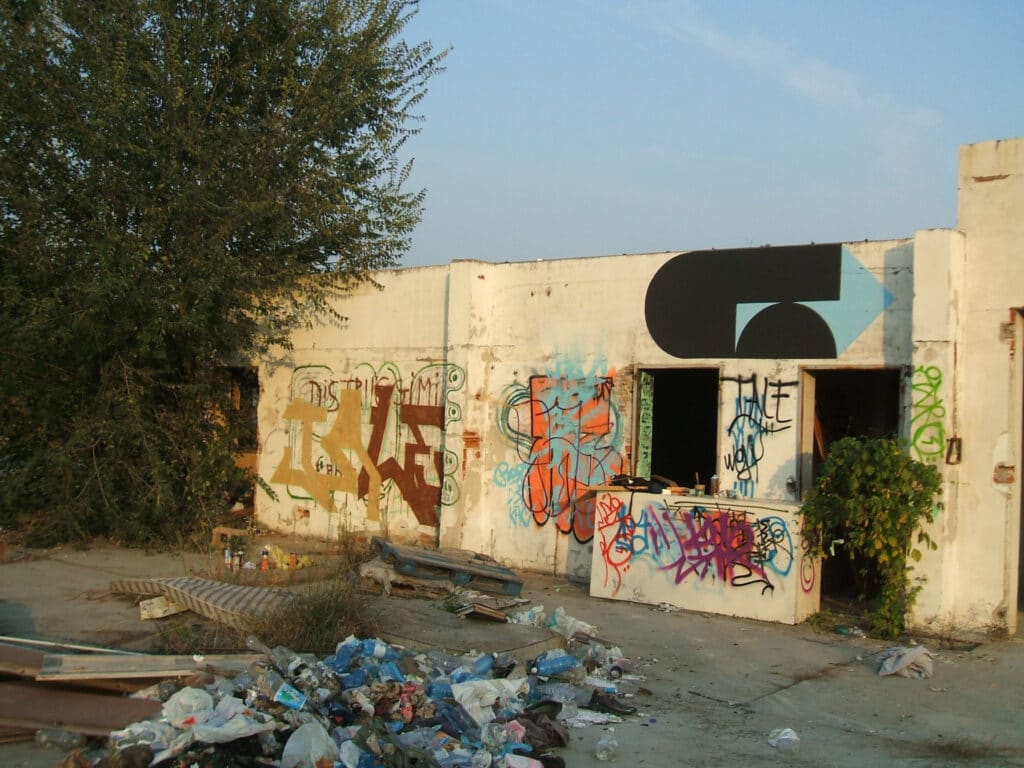
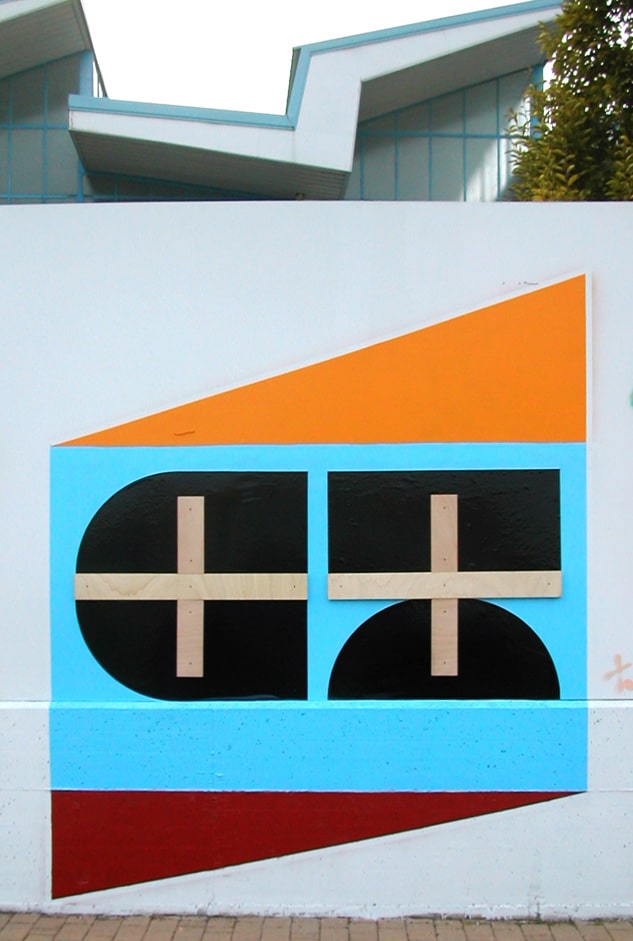
Travelling, connecting, developing
In 2006, CT went to Milan and met Berlin artists Akim and ZASD during a workshop of their „Jazzystylecorner“. He visited his new colleagues in Berlin the same year and discovered the work by Kripoe, CBS, Drama and other Berlin writers. He met ELTONO in Turin in 2008 and discovered many other artists online, as well as the works by the French writers HONET, STAK, L’ATLAS, TANC and FOE. FOE started painting in 1998, logo style pieces on trains, a style that had a huge impact on CT. A year later, he painted the first time with Italian writer 108, who works in a very minimal way with mainly black color and biomorphic forms. They continue to create pieces several times a year in abandoned places until today, pieces, which are very different but work wonderfully side by side.
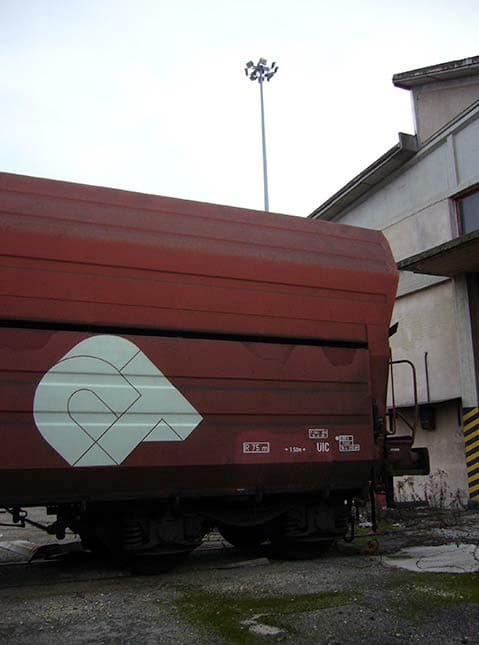
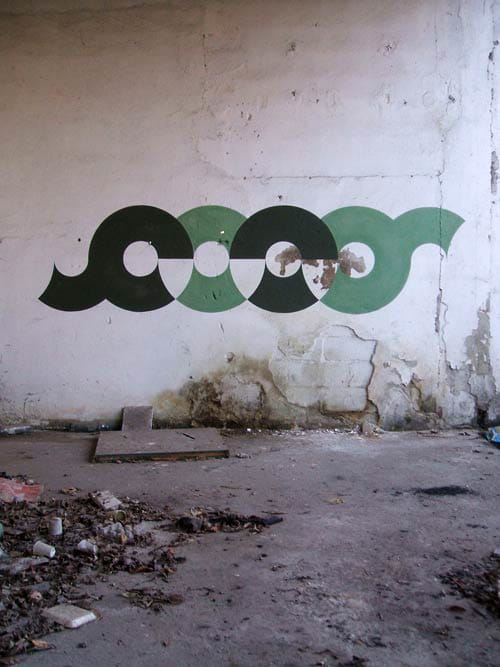
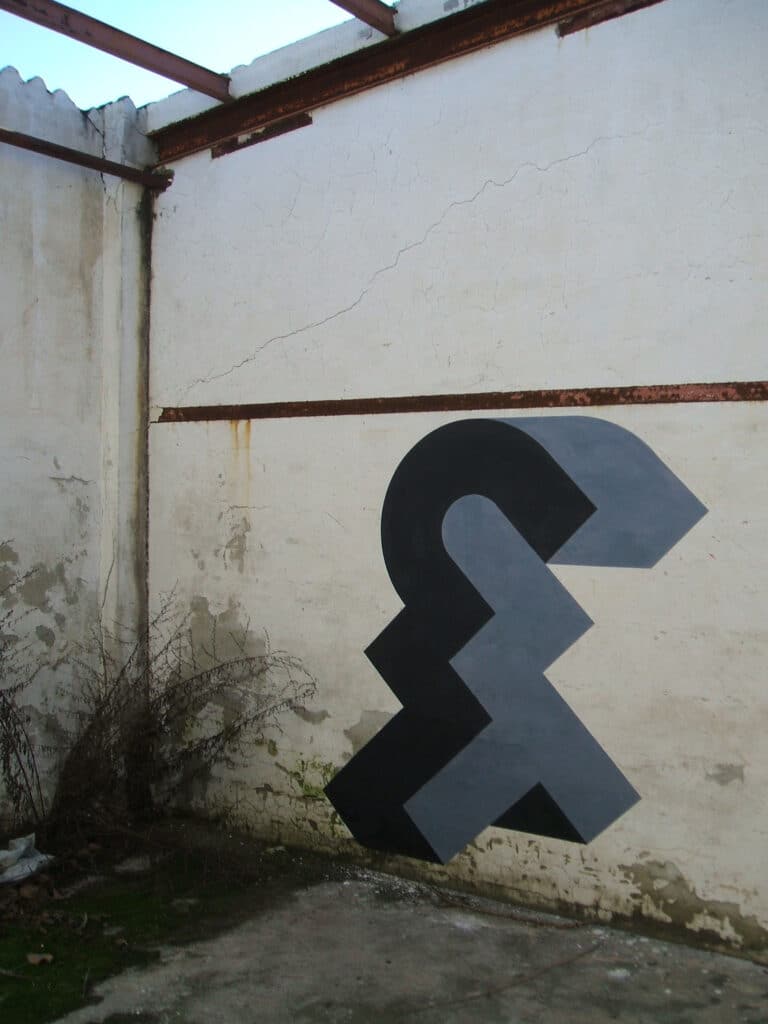
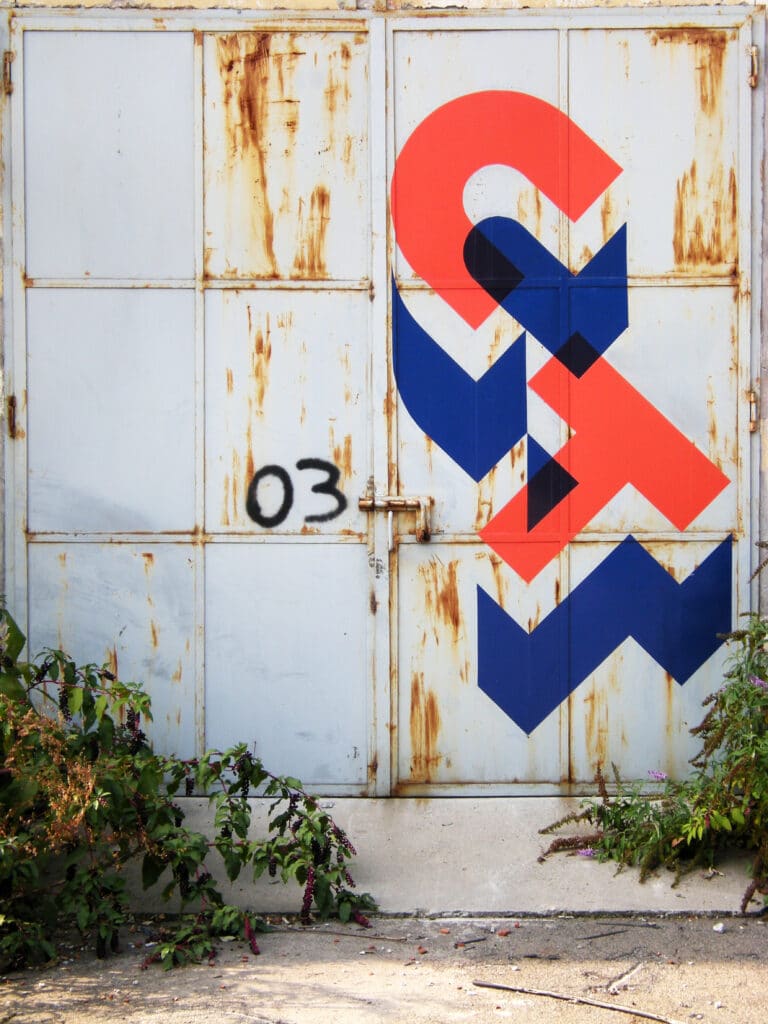
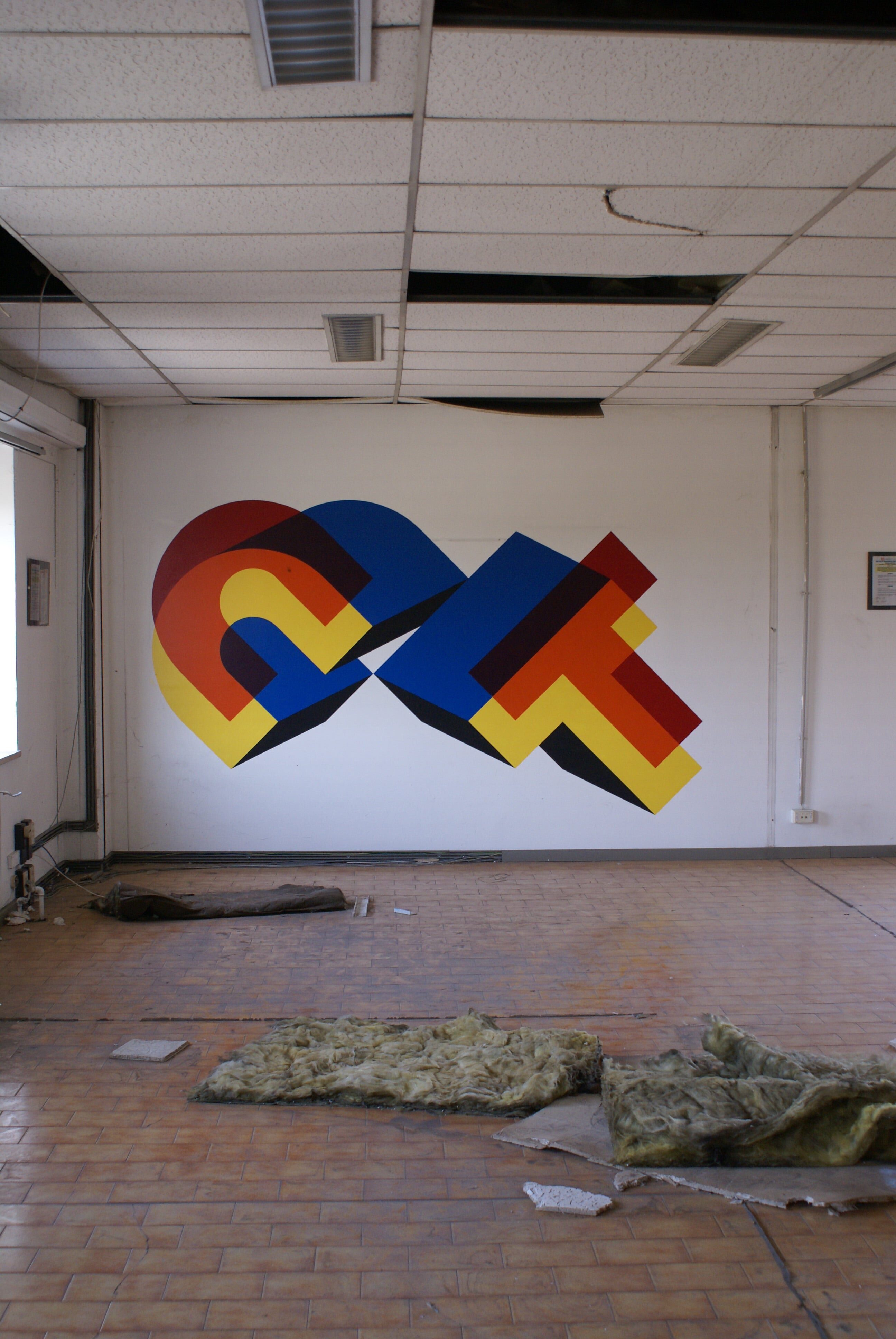
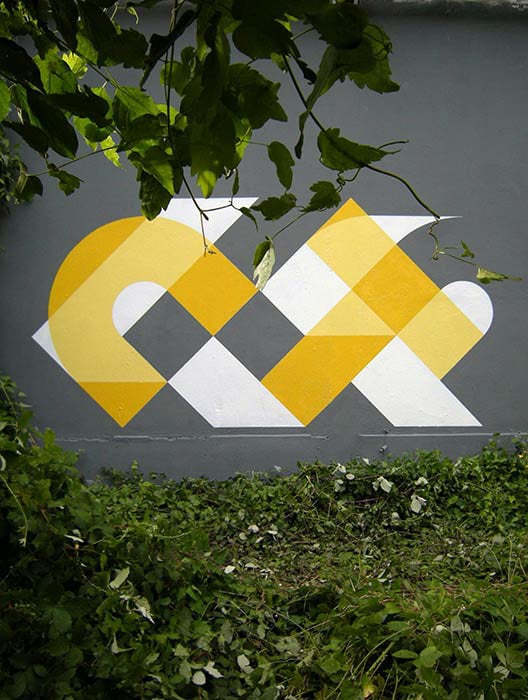
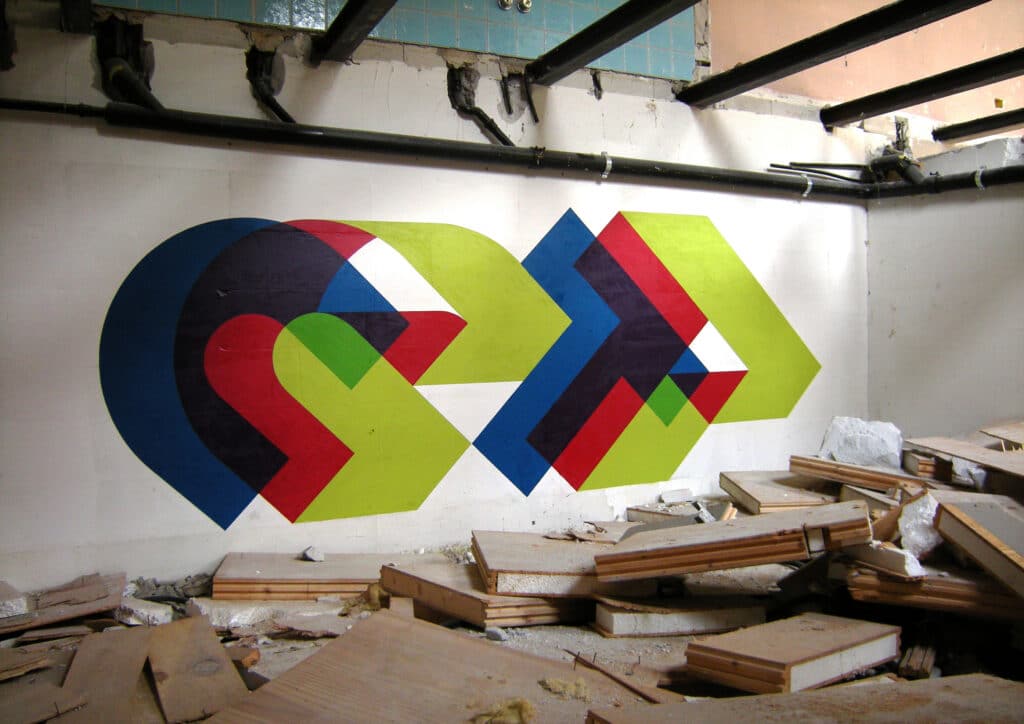
In 2007/2008, CT went to the Netherlands, where he already knew the work by DELTA and EROSIE and considering the works by ZEZD, Wood, ZIME and Graphic Surgery. His trip to the Netherlands changed and enriched his point of view about graffiti writing, seeing what kind of novel graffiti was created in the Dutch environment. In the following years he did collaboration walls with Graphic surgery, ZEDZ, EROSIE and ZIME as well as with many other graffiti artists like VOSTOK, 0331C, Scheme, LOUTSIDER, XVLF, ELTONO, CKE, BLUER, SLOW, Cap crew and others.

CT describes his work of this period as follows: “In 2008/2009, I began to make a sort of isometric effect, after which I duplicated the layers, creating overlaps. And my minimal work was becoming quite complex, especially when I was using six to seven colors. It was crucial for me to be able to have a technique that was suitable to make me work faster. In this way, I had a much more thoughtful approach to the wall, I had to take measurements of the wall before going to paint and to be able to snap a picture. It was interesting for me, this phase of building my tools, because it was a time when writing was something already quite fashionable (…)“. During this time, the Italian artist also developed print effects with spray cans, creating transparencies on the overlapping parts of the geometric letter shapes in different colors. His pieces were then still constructed with readable letters C and T. His first indoor exhibition took place during that year in Turin at the Cripta747 gallery.
Later, in 2010/2011, CT had health problems and was forced to take a break. During that time he was interested in modern and contemporary art, had time to reflect on his work and got new inspirations for his own artistic practice.
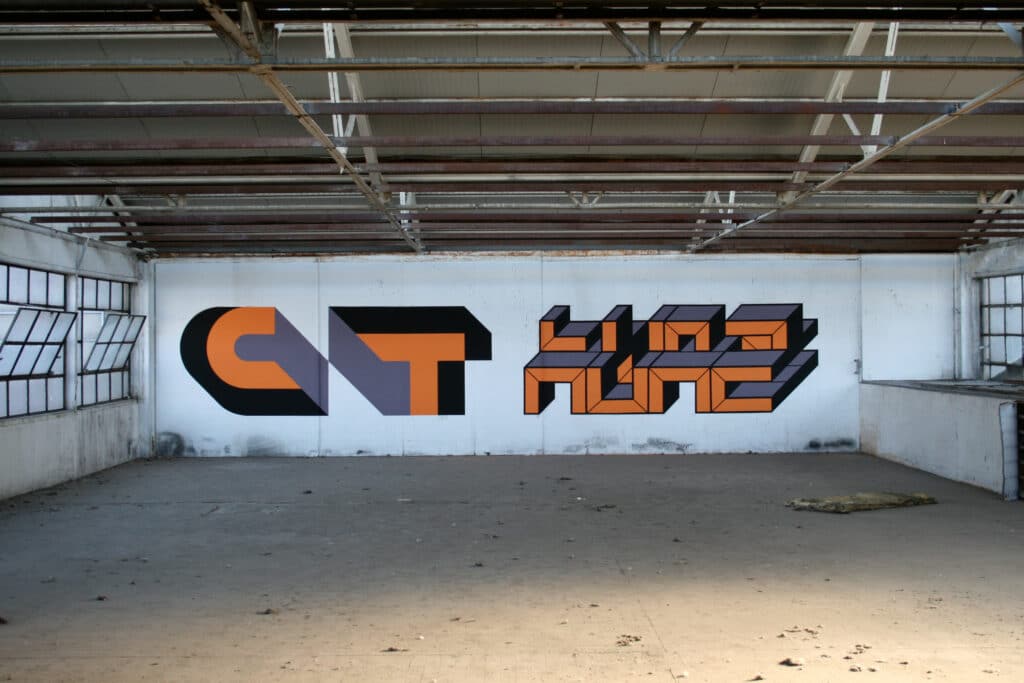
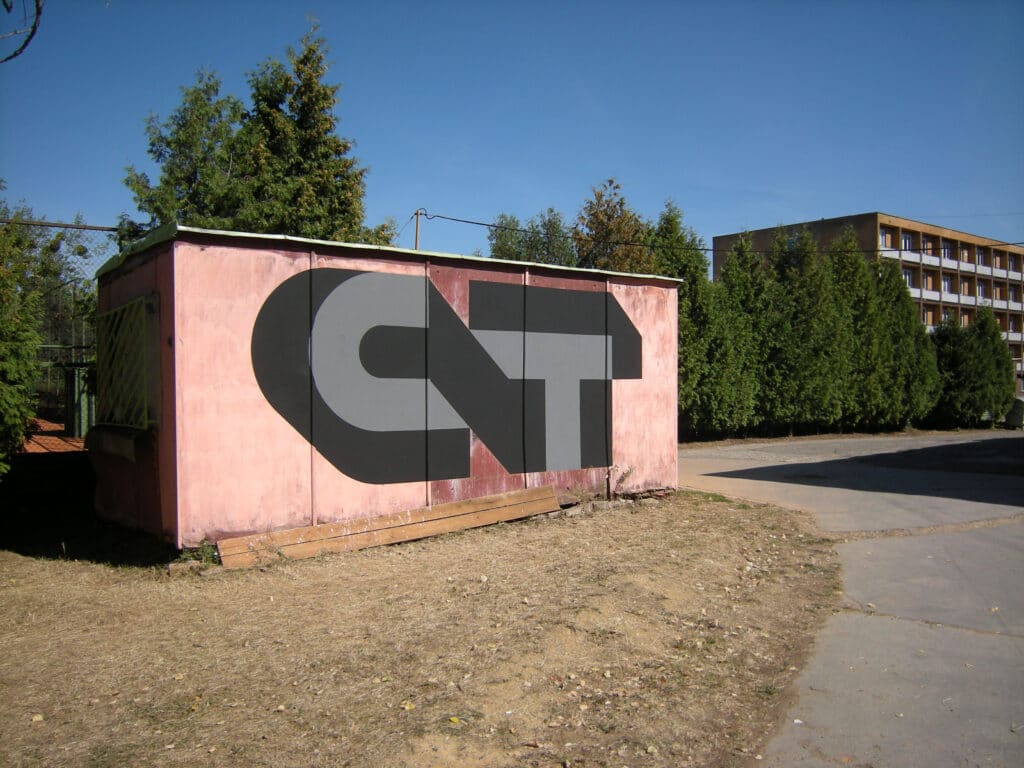
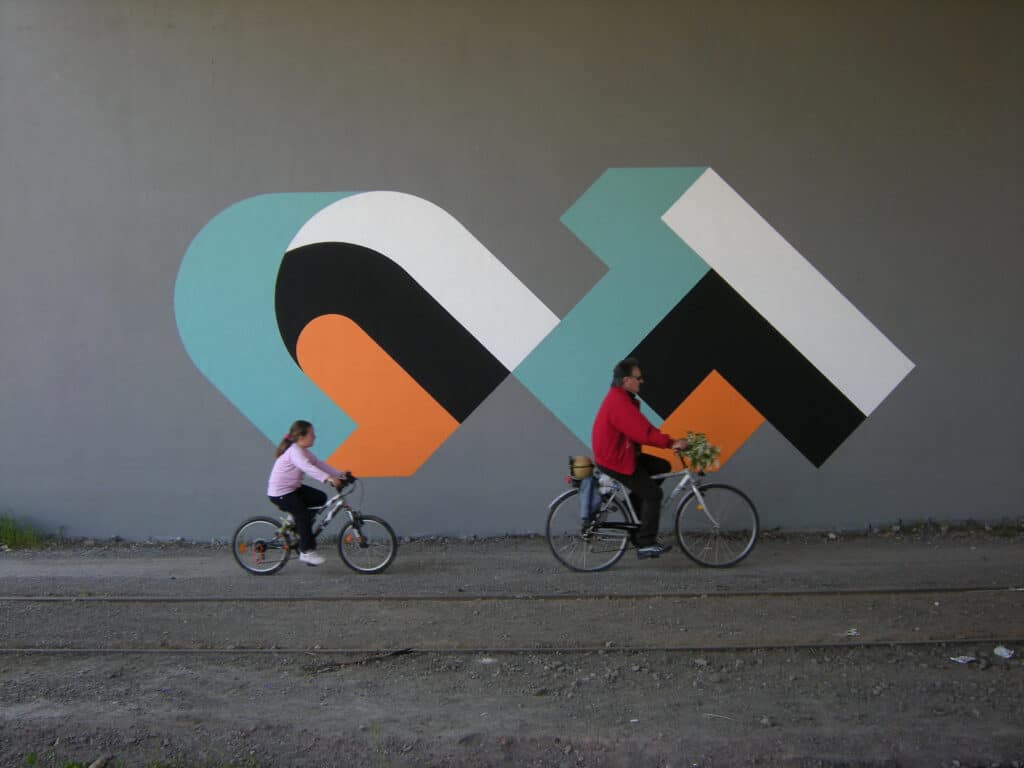
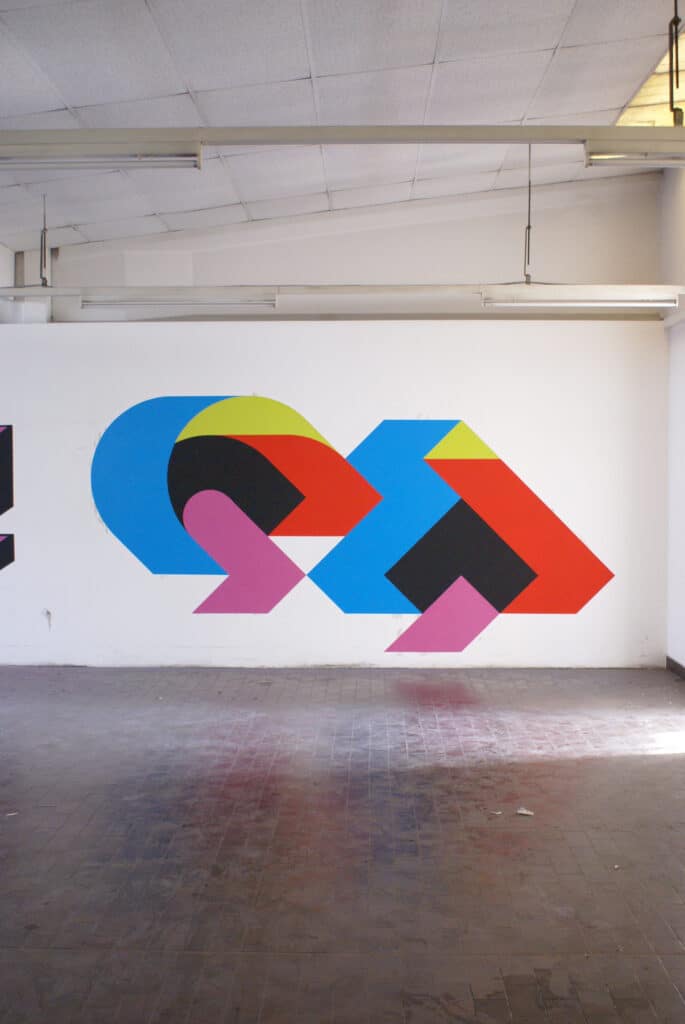
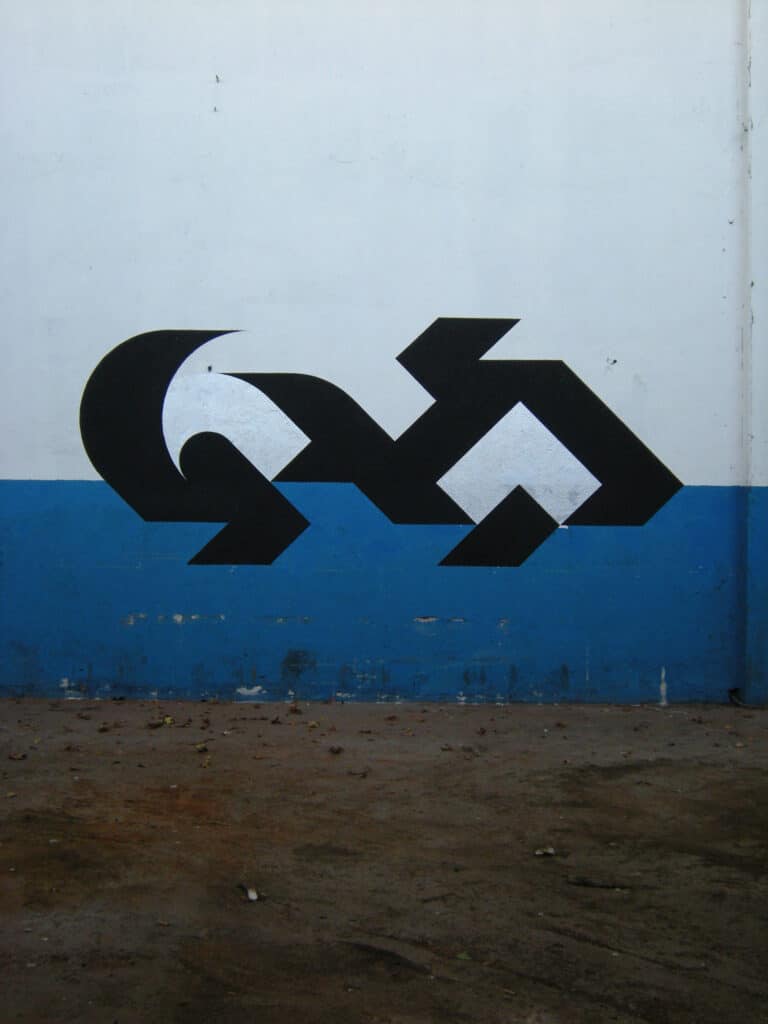
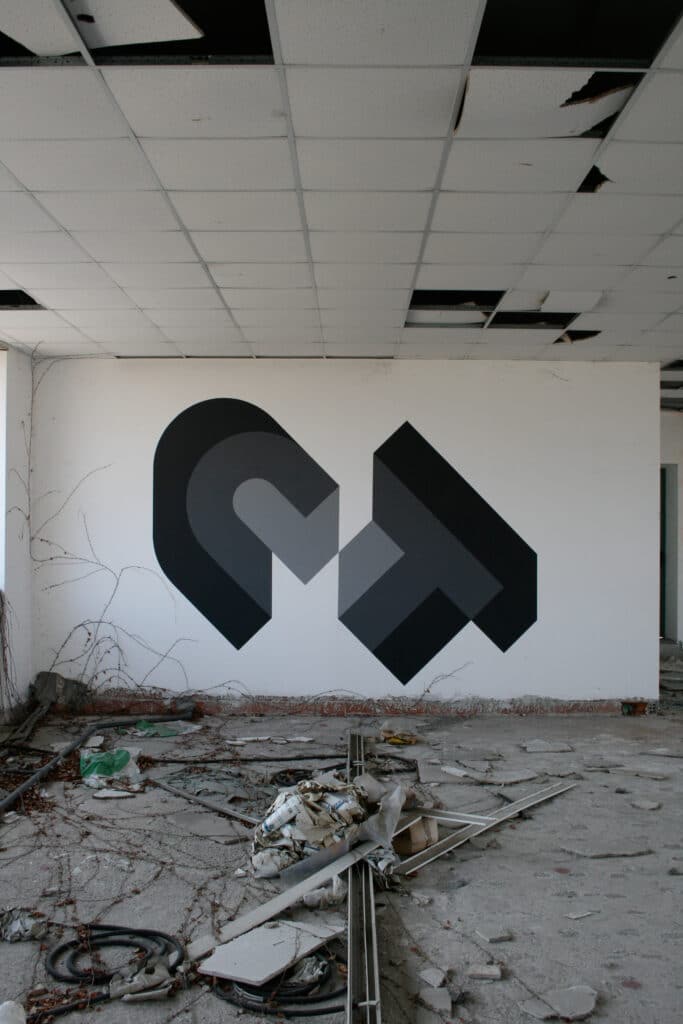
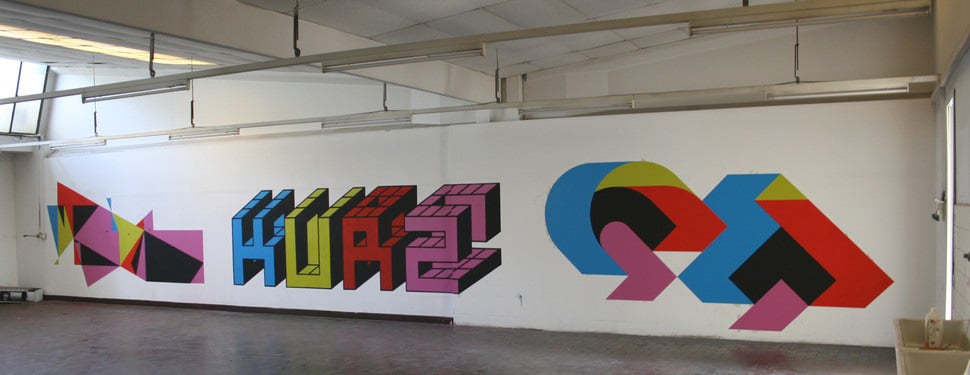
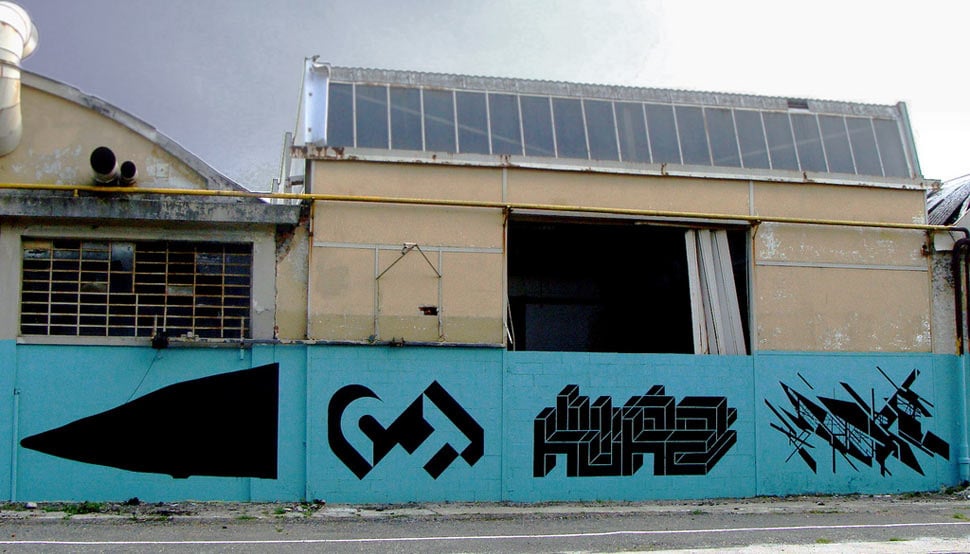
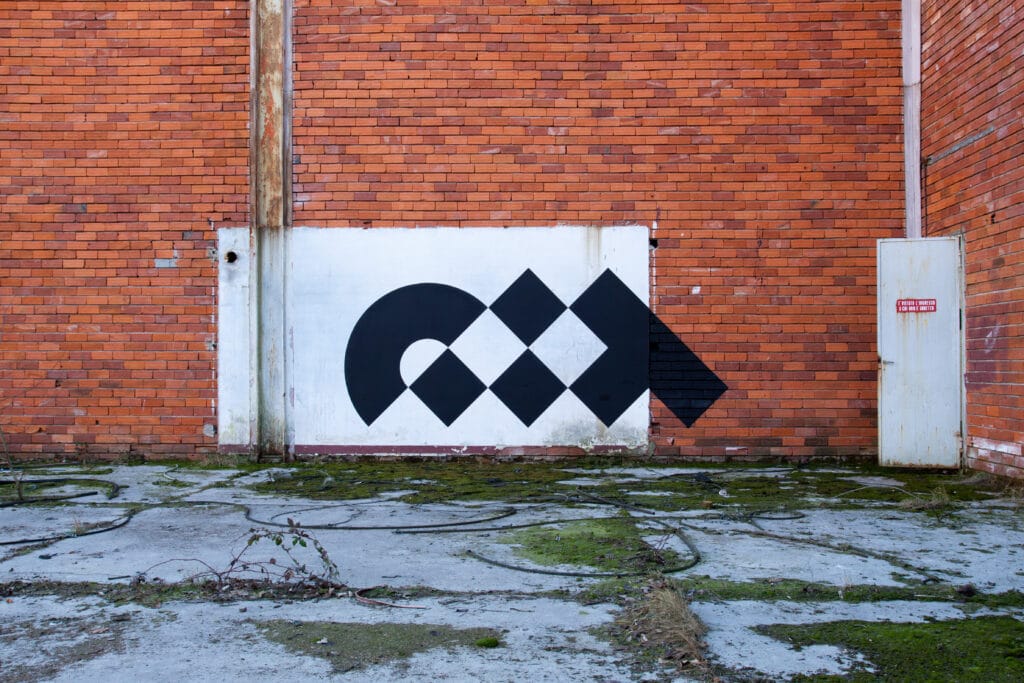
Breaking down the letters to become pure forms
Recovered from his sickness, CT started in 2011/2012 to paint again. This time he went mostly alone to abandoned places and needed to work a bit faster. For his new concepts, he now gave less importance to the readability of the two letters, breaking them down towards the capability to stand out only because of their pure forms. His work became abstract and minimal, influenced by his knowledge about minimal art, color field and hard edge painting. The work by artists like Frank Stella, Donald Judd and some Italian artists like Carla Accardi and Piero Dorazio of Forma 1 (a group of young Italian artists formed in 1947, re-founded in 1961 as the group Continuità), had a huge impact on CT’s reflection about his own graffiti practice. Elementary geometrical forms, serial order and industrial methods of producing are characteristic of minimal art. CT takes some of these aspects for his own works in situ, deliberately leaving no individual brush marks on the color surface like hard edge artists, working stencil-like, two-dimensional, with geometric forms with sharply delineated flat color applications. His color palette is restricted, he uses spray paint for his fill ins mostly in the winter, and latex colors in the summer because they can then dry fast. Since 2014 he gets his wall paint exclusively from a waste disposal center for special waste, using the colors he found, recycling and restricting himself by this way in terms of color. His favorite colors he found are dark blue, that shine nearly black on photographs, as well as grey. From 2014 on, he used less and less circular forms and works more with triangles and generally with symmetries, not using his self-made cardboard tools since 2016 anymore, but working with striking cord and chalk to create pieces in larger dimensions.
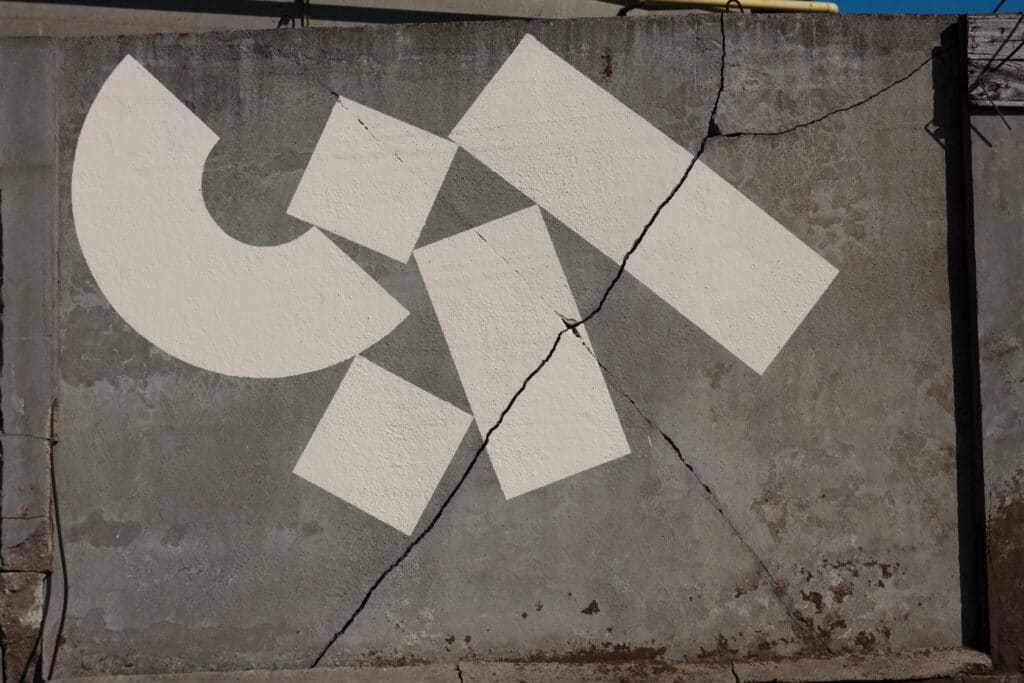
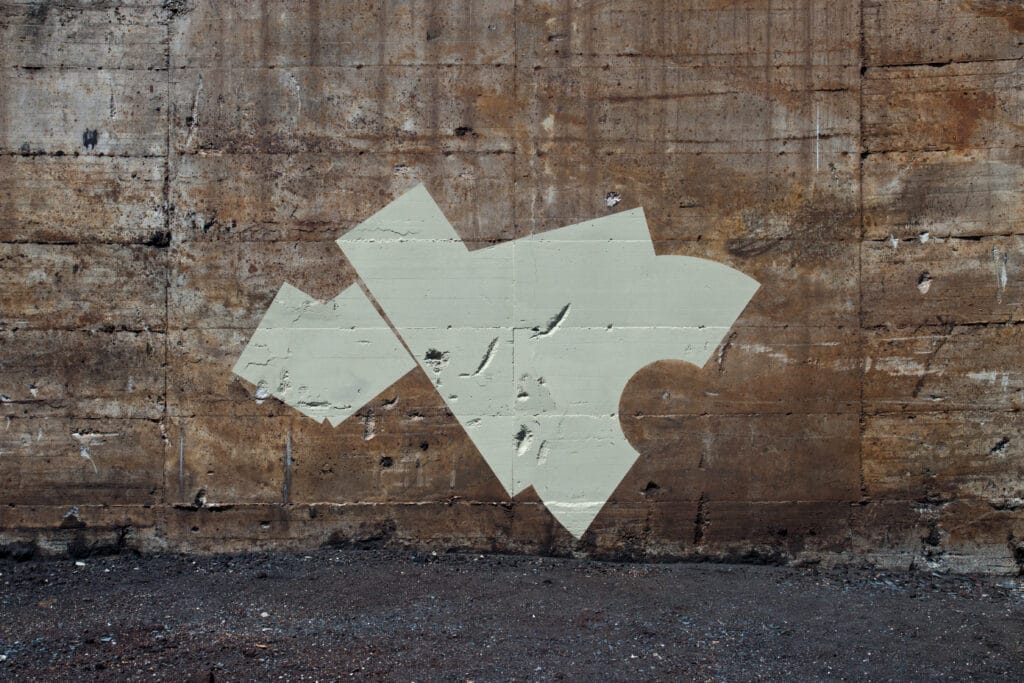
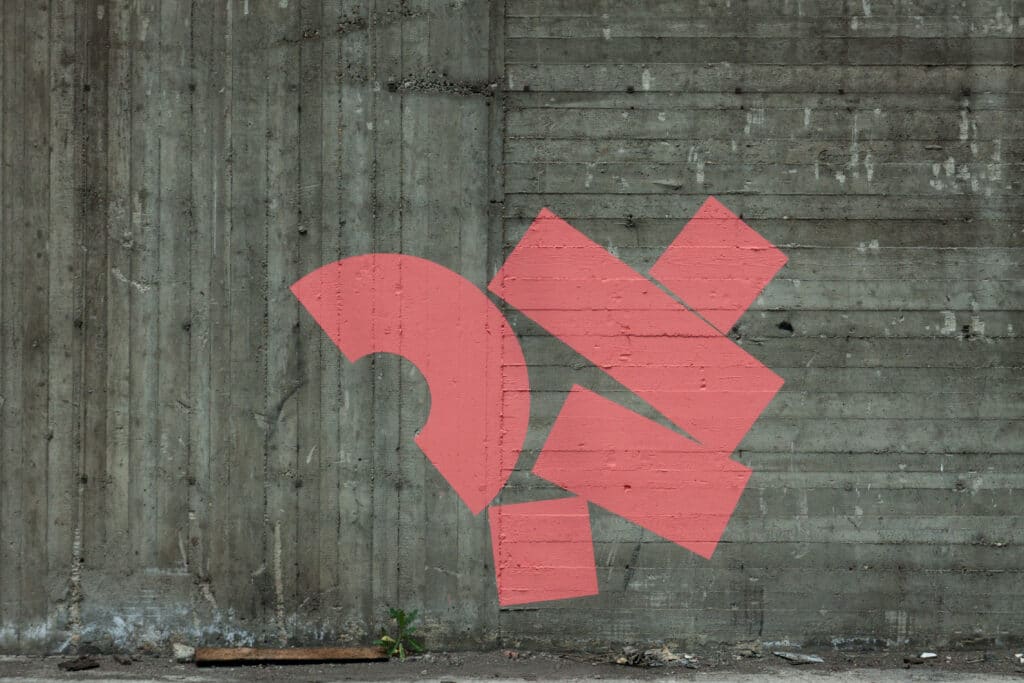
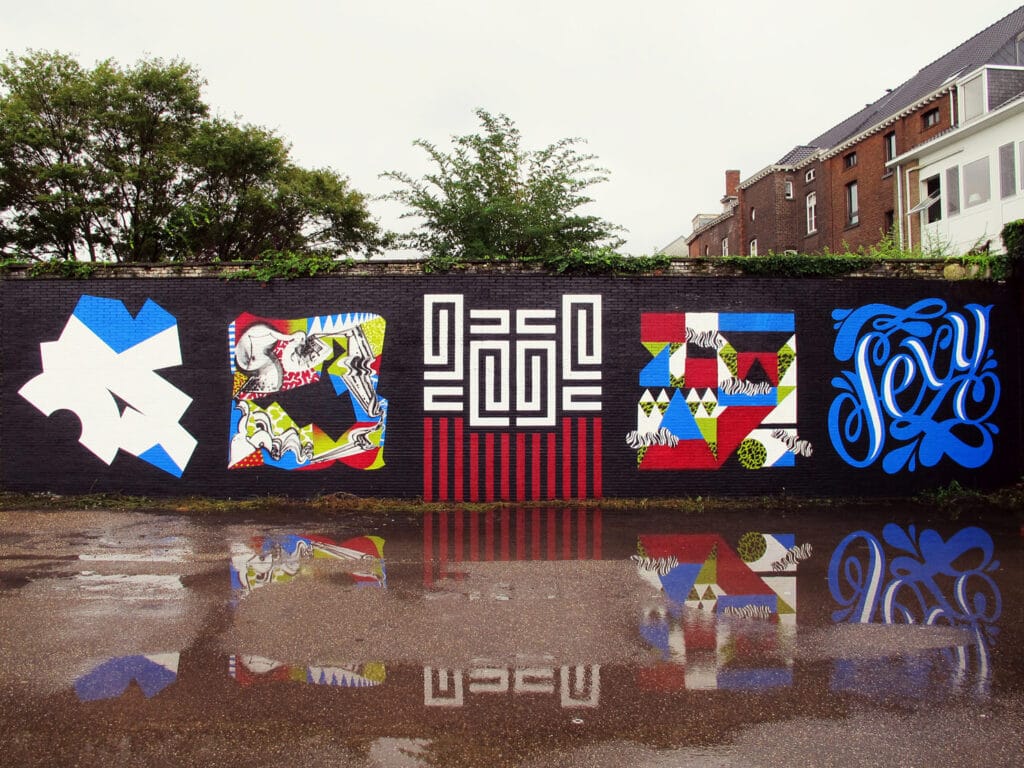
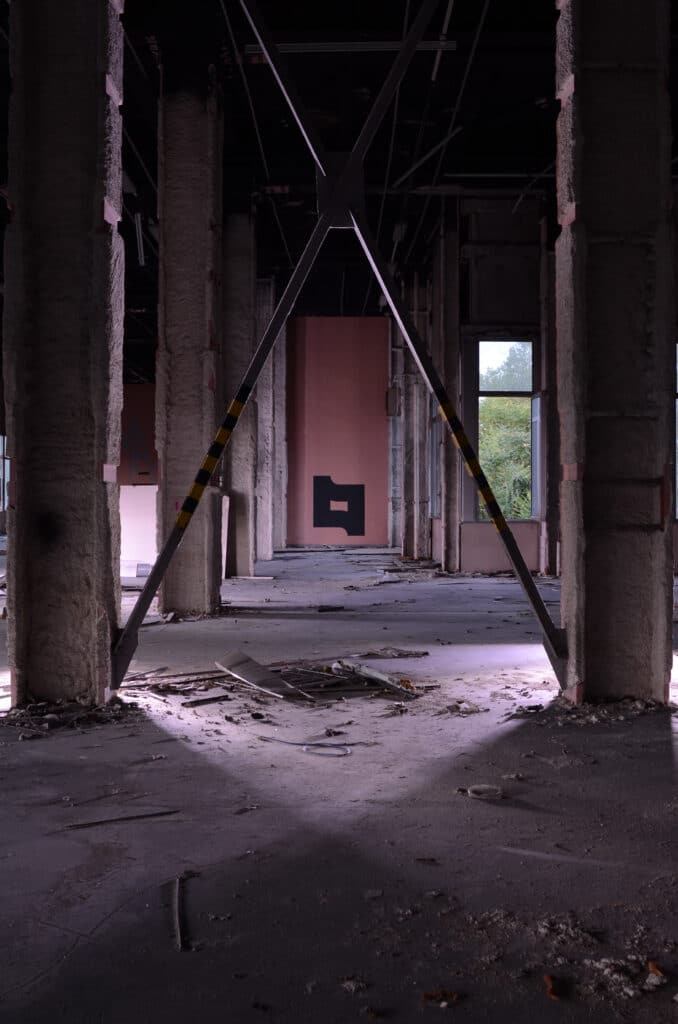
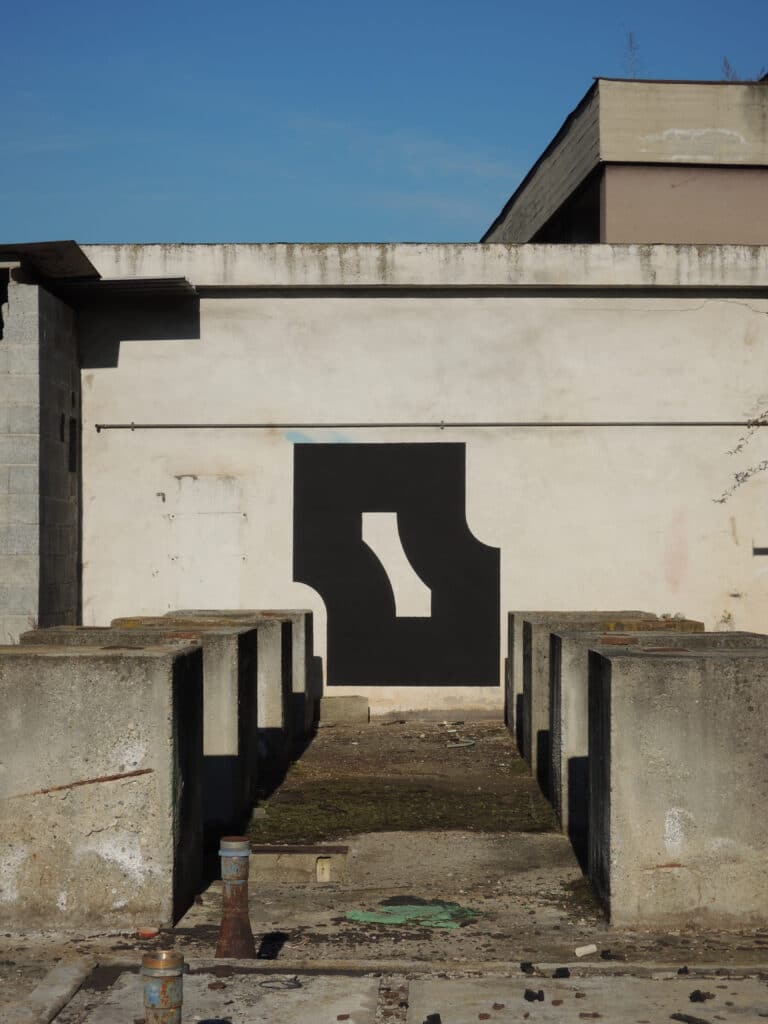
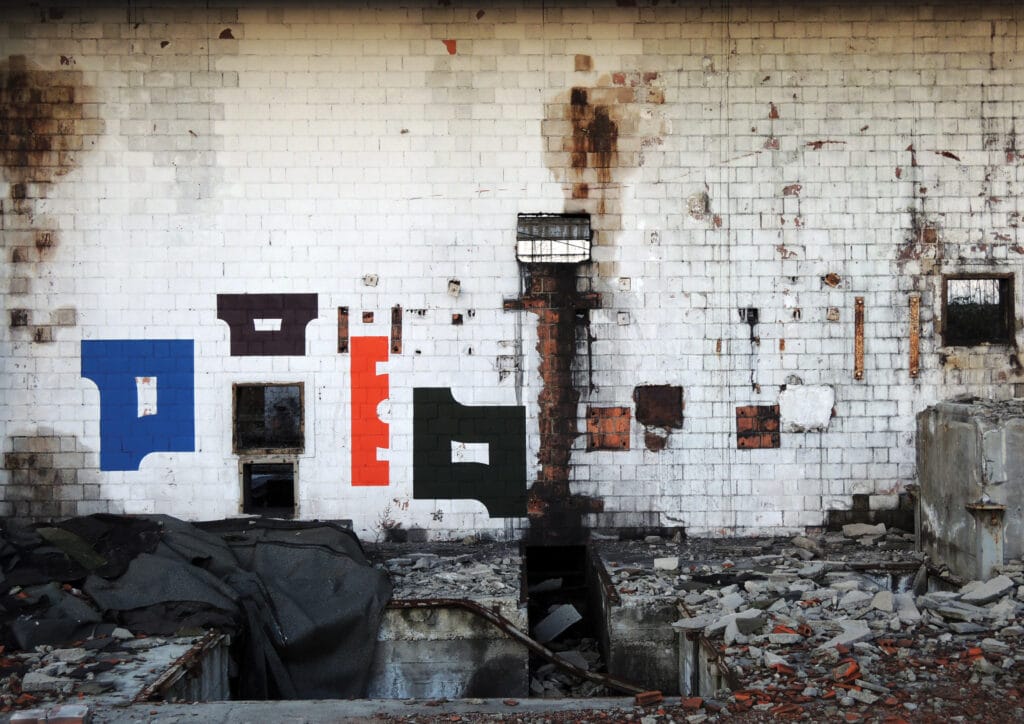
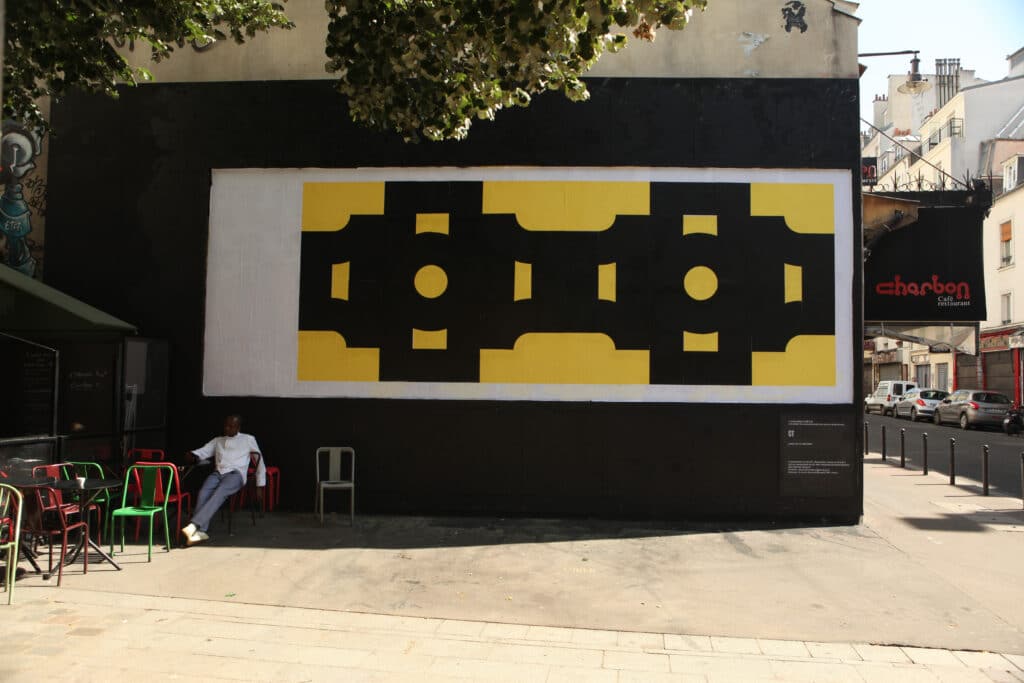
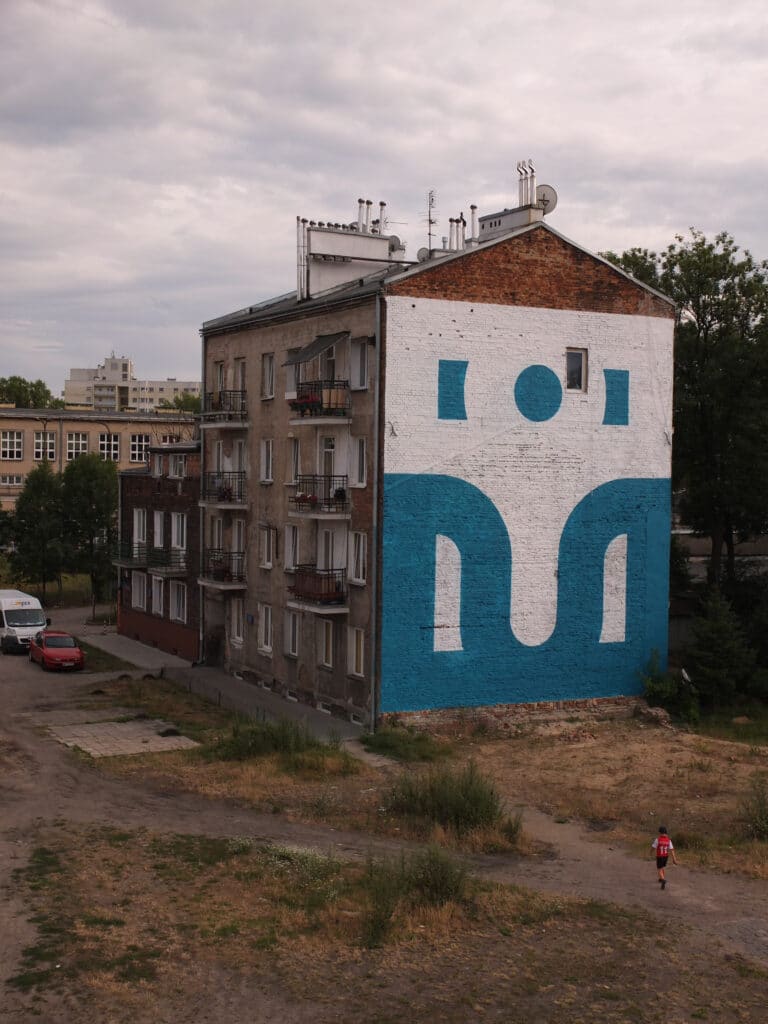
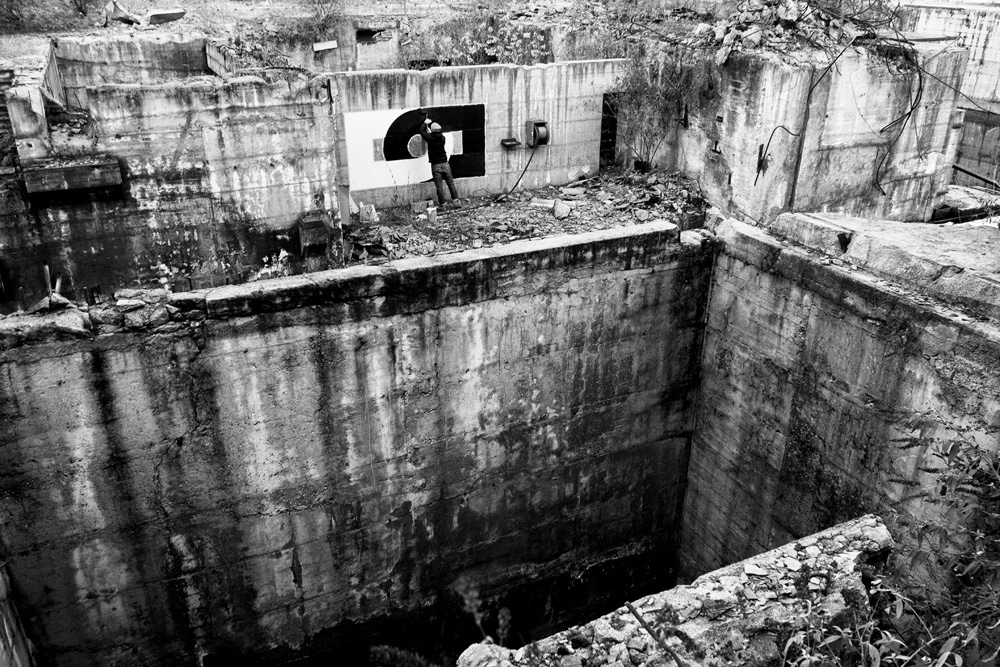
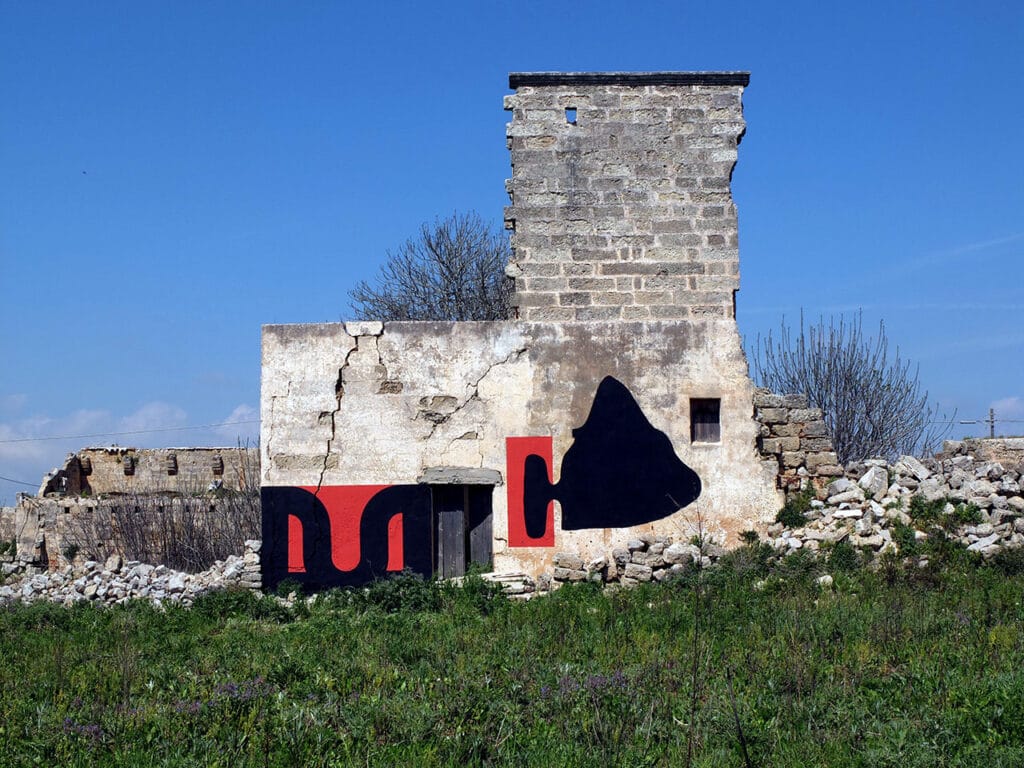
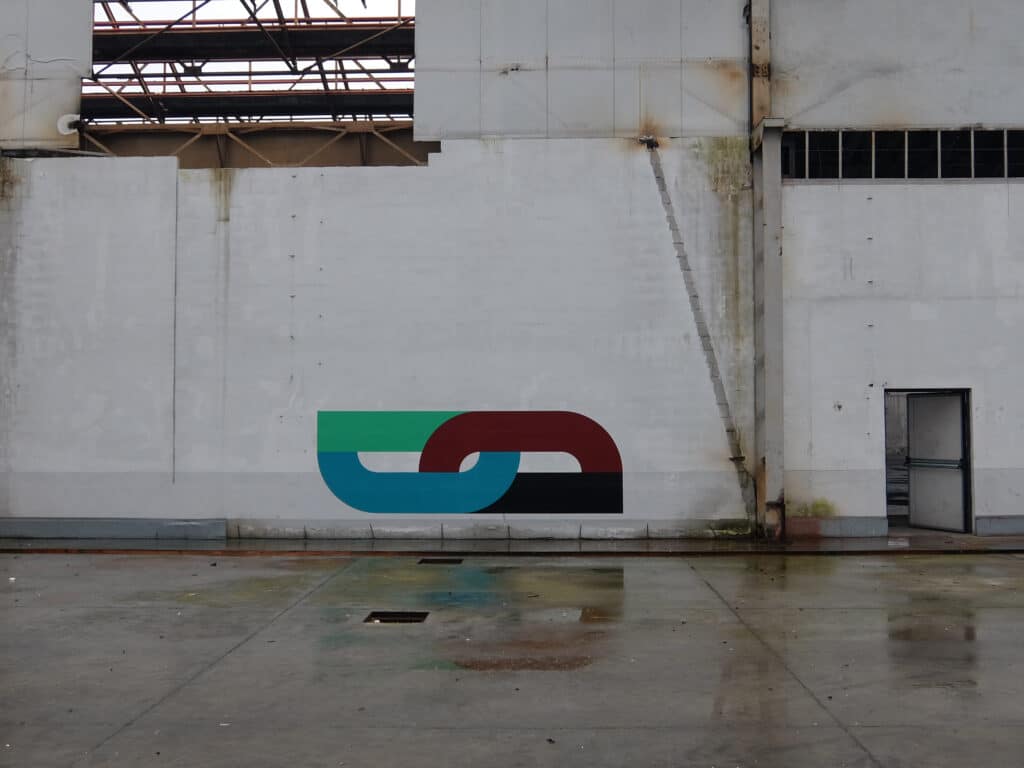
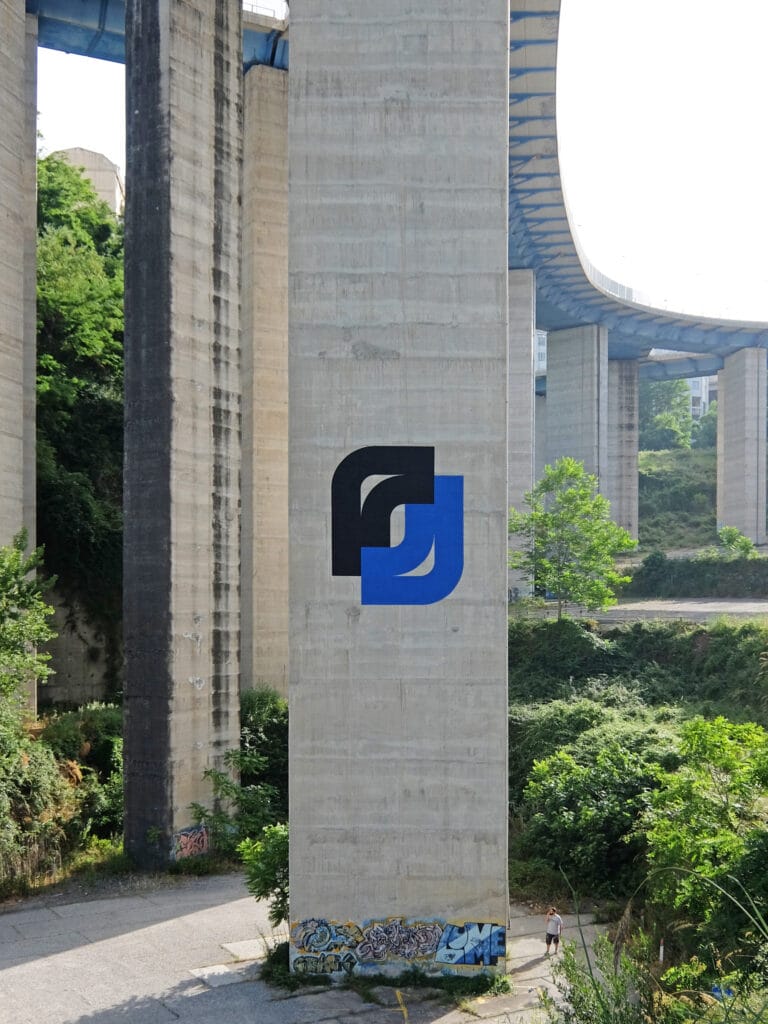
The Italian artist CT is always looking for a result of pure, balanced forms that are simply are. In reducing a graffiti piece to simple basic structures in order to bring out the clarity and essence of the form and the surrounding space, CT calculates the effect of his works precisely in advance, like minimalist artists do. In simple forms, he strives for a synthesis of size, shape, color and emplacement. His wall paintings, that are still, even if abstract and not readable, graffiti pieces in his eyes, with dimensions around two by six meters, became pure forms occupying empty spaces. Invasive, clear and massive, his works are able to unfold their full presence in situ. The artistic interventions by CT outdoors create a space within painting can live. And this makes us think of Frank Stella, who said : But after all, the aim of art is to create space – space that is not compromised by decoration or illustration, space within which the subjects of painting can live.” The final photograph of the work in situ, showing it in the surrounding space, adds the contextual proportions to it, as well as the impact of the work in the environment and a certain poetry. Wall paintings and graffiti pieces are published and shown through photography online or in print media, that is why the medium of photography is generally so important for graffiti art and outdoor art works in general, a medium that CT uses skillfully for his own art works.
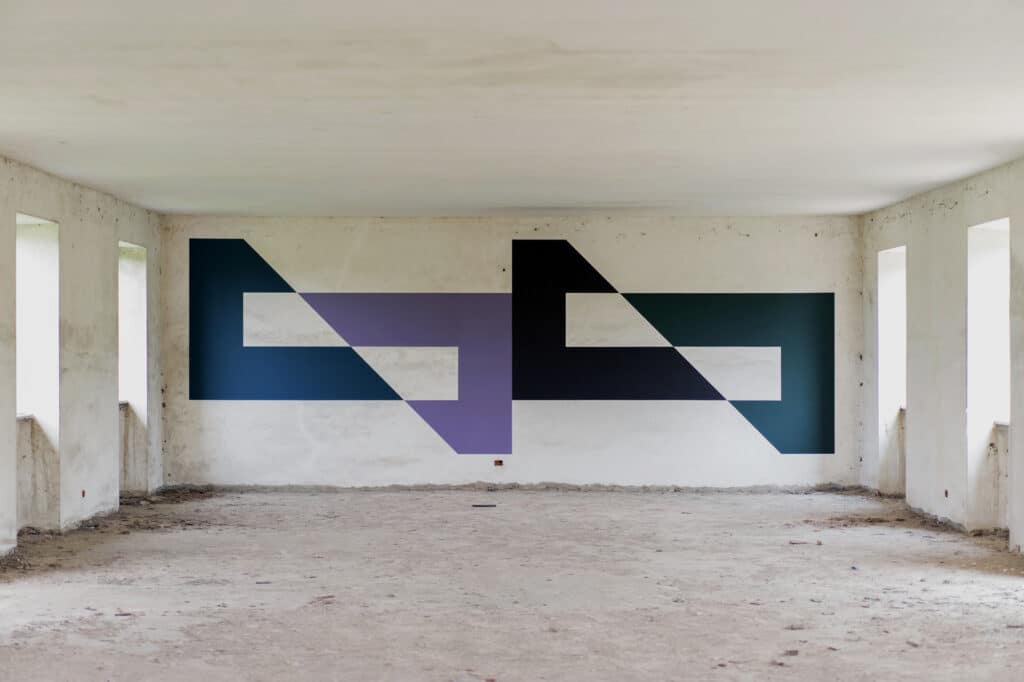
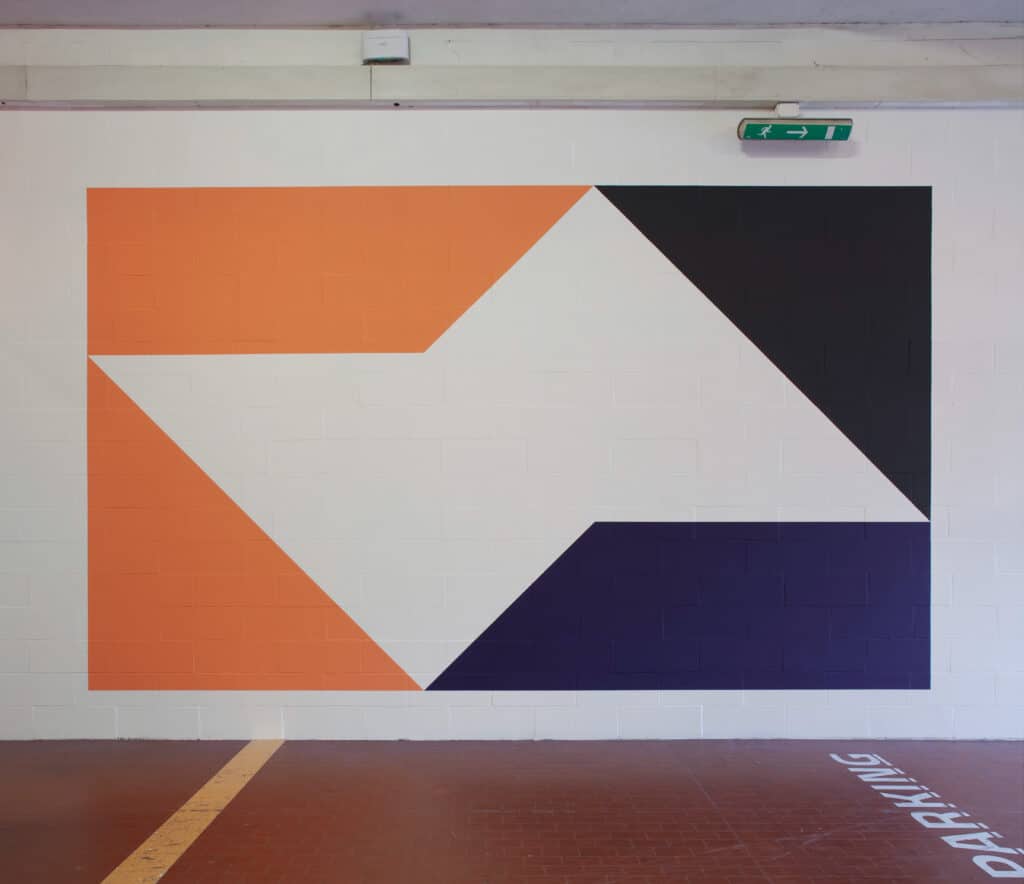
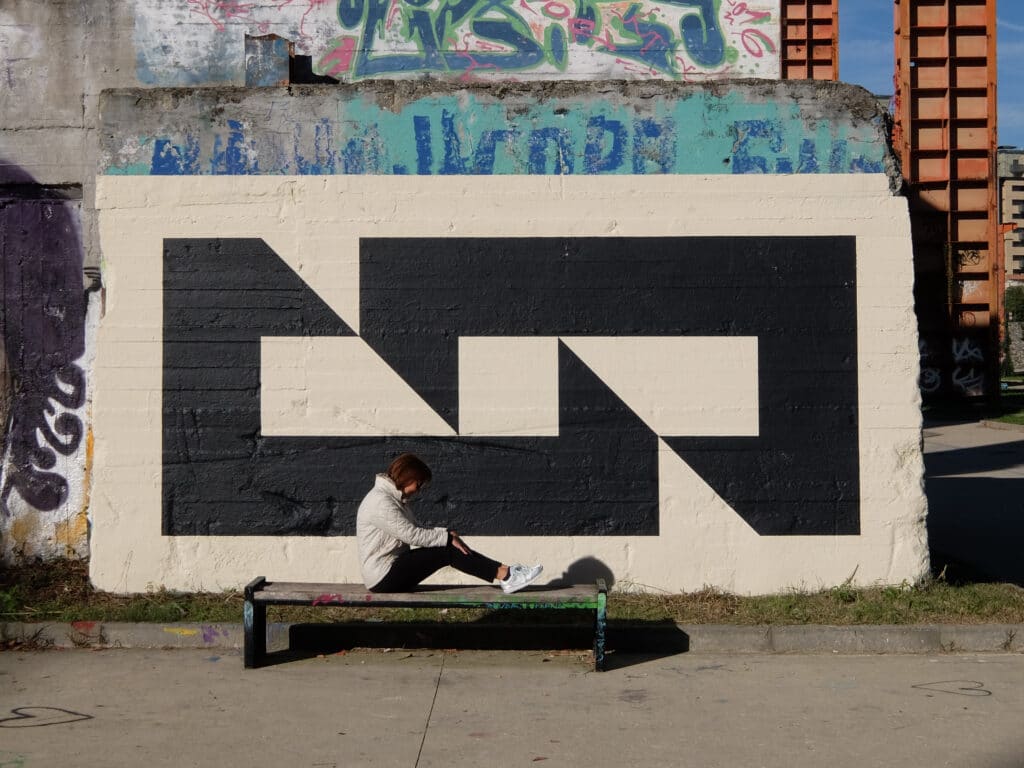
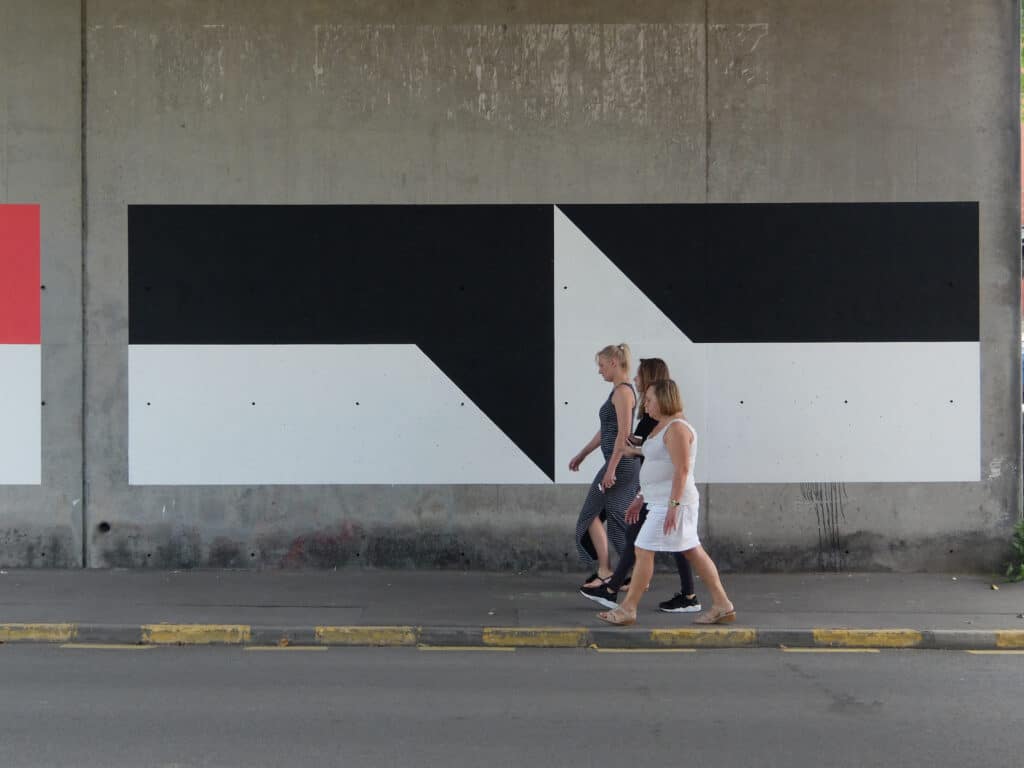
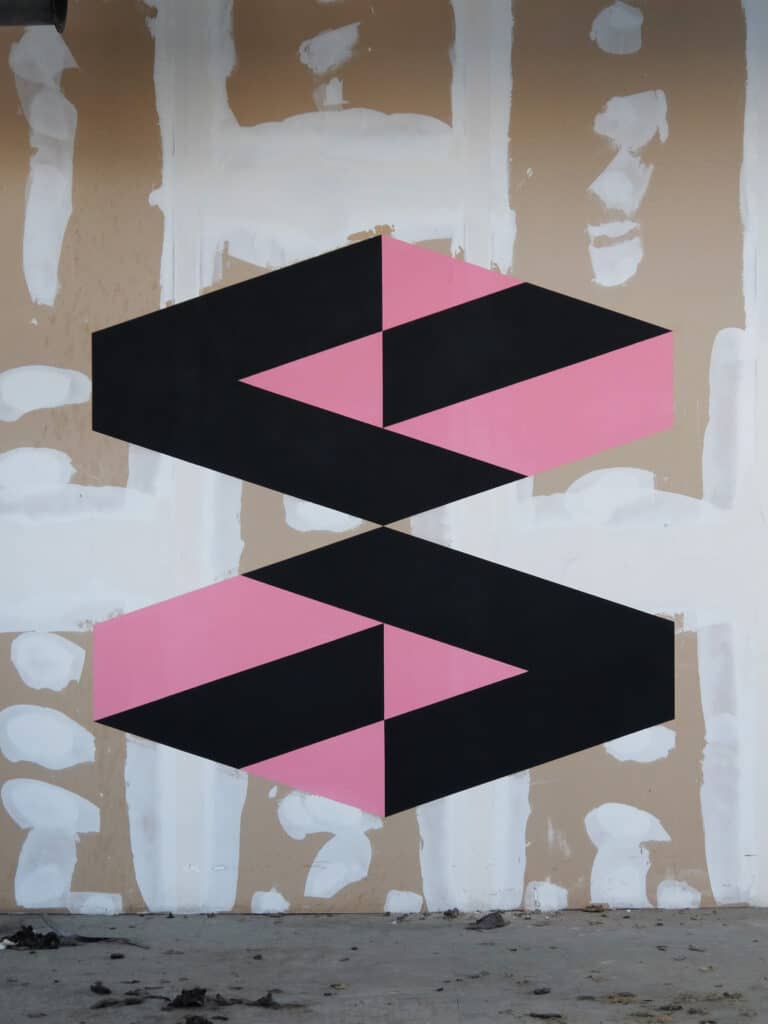
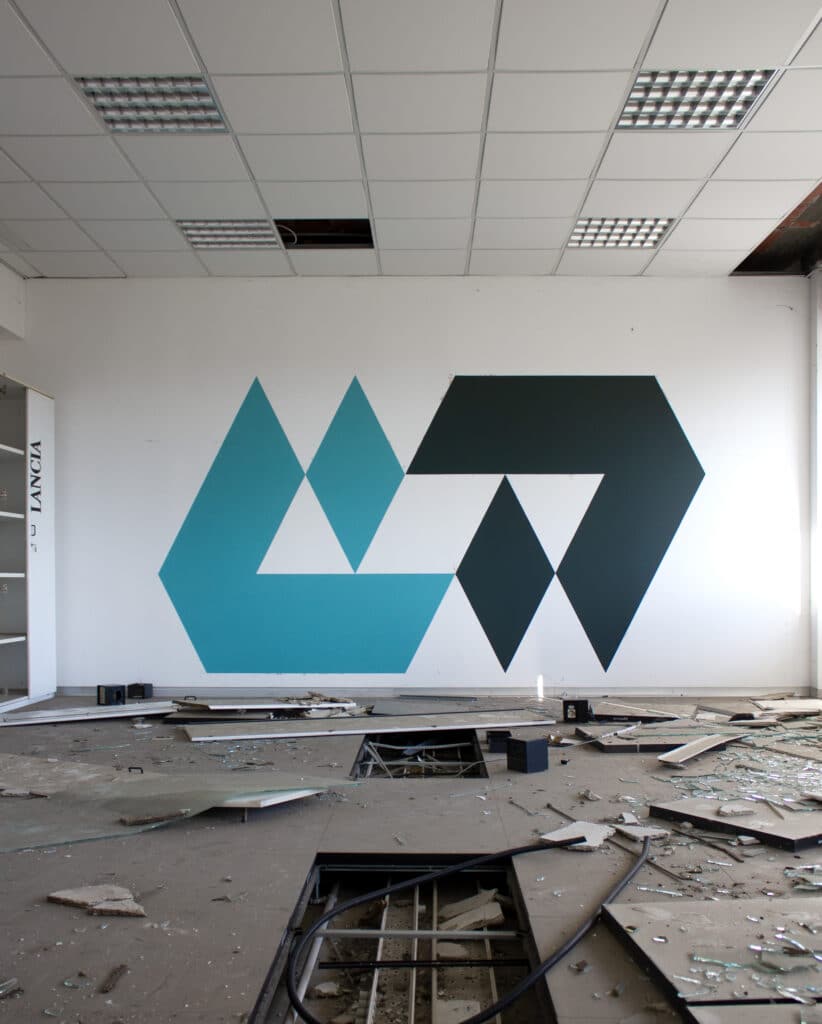
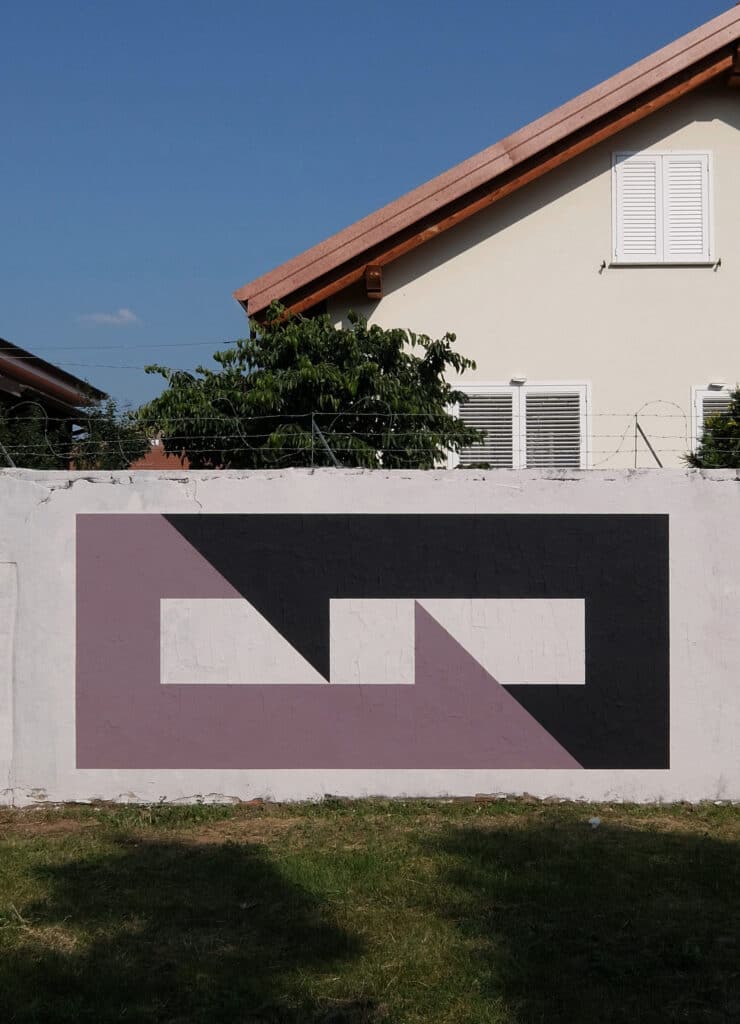
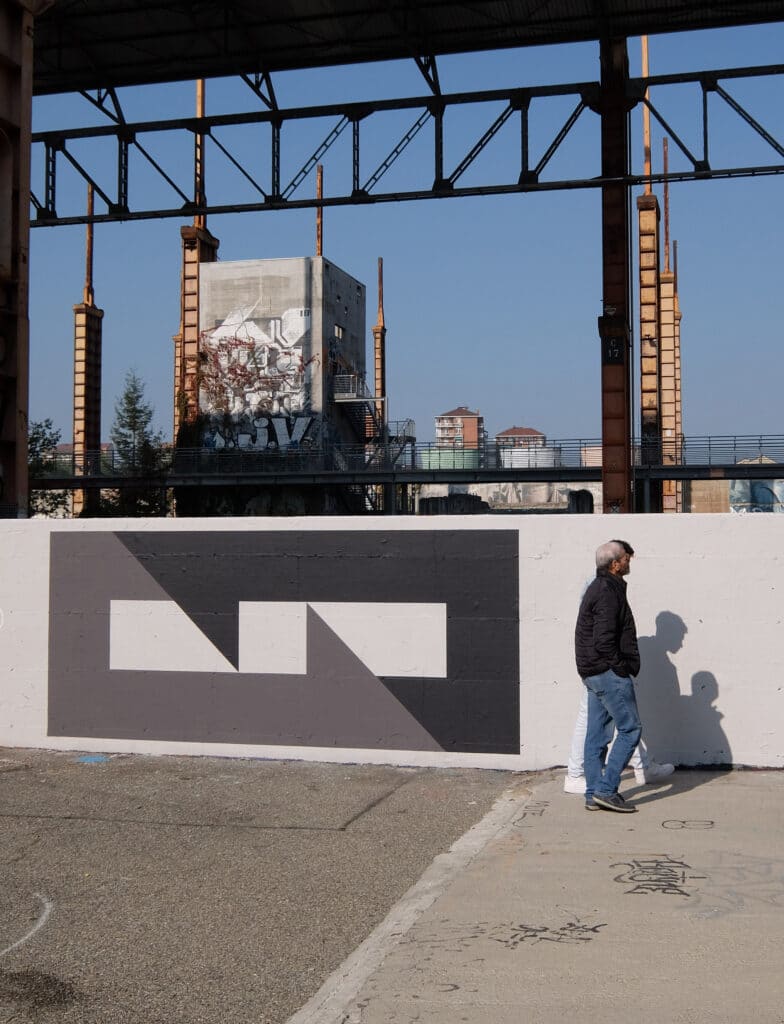
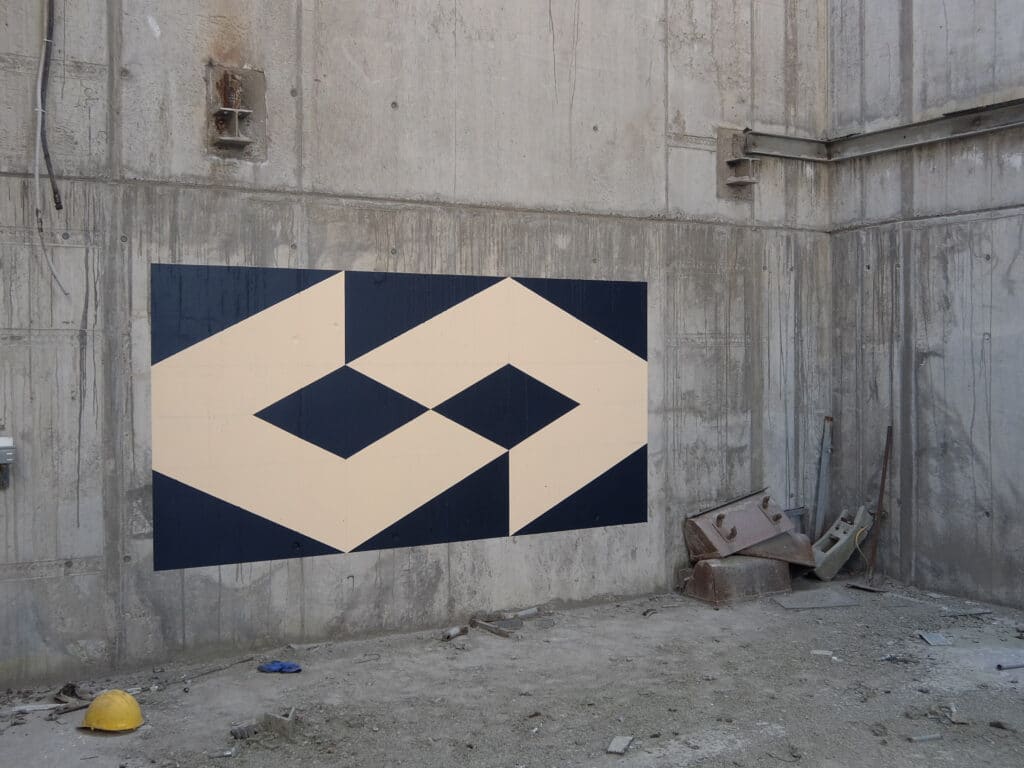
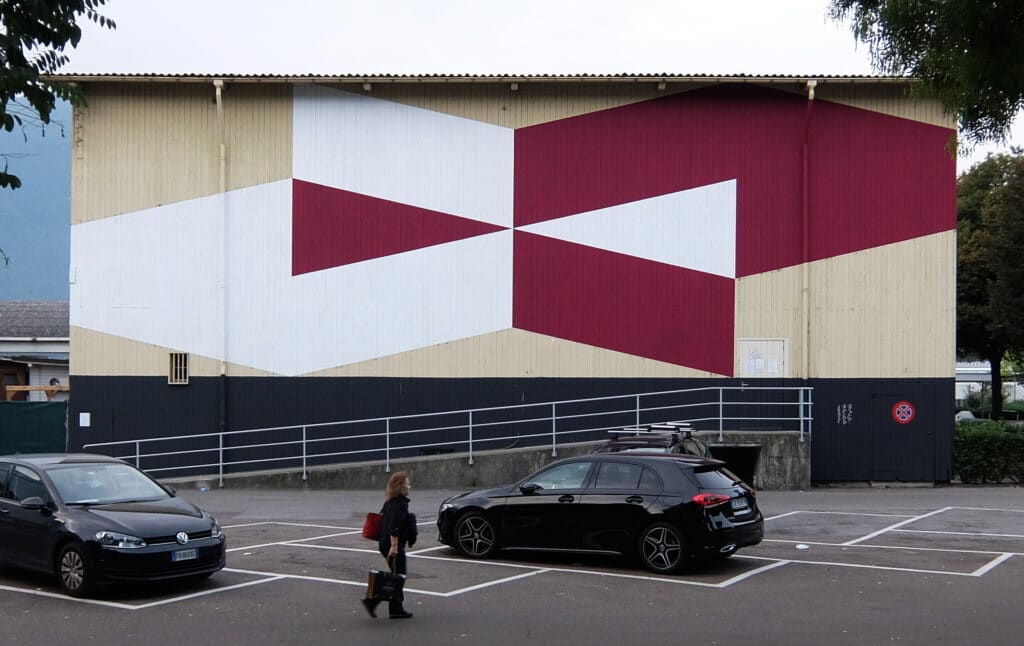
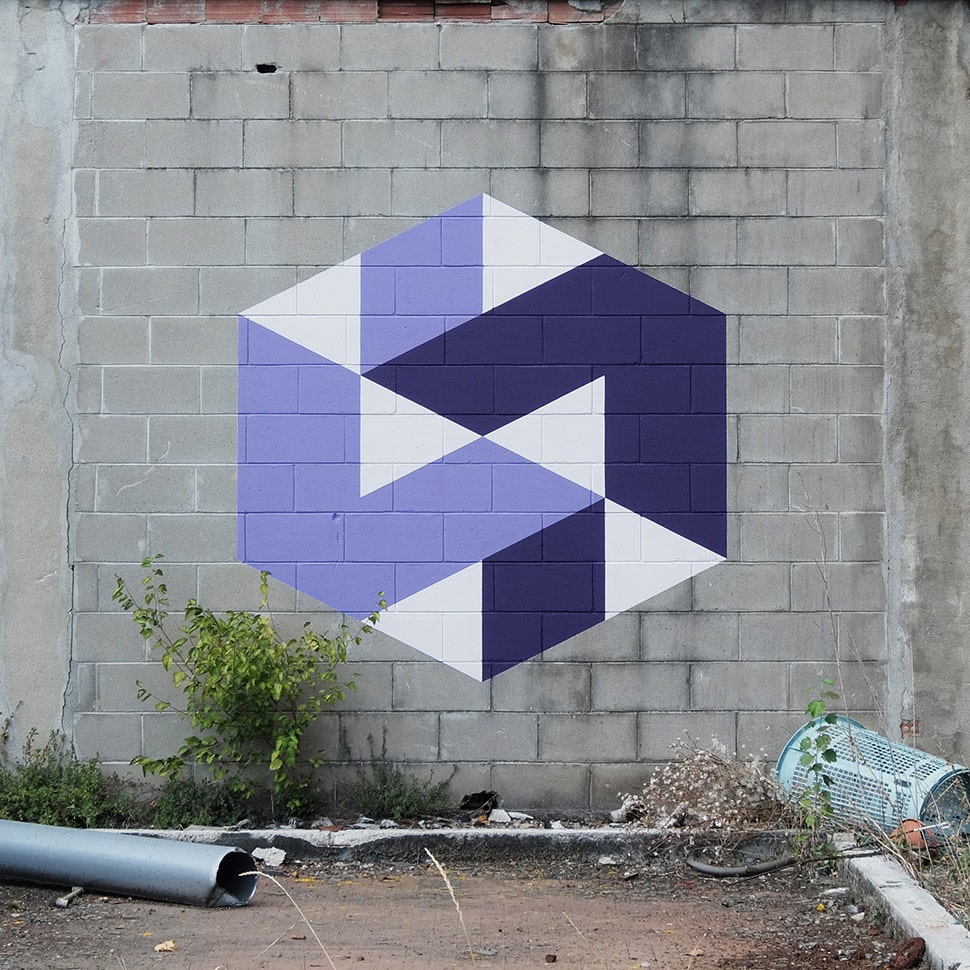
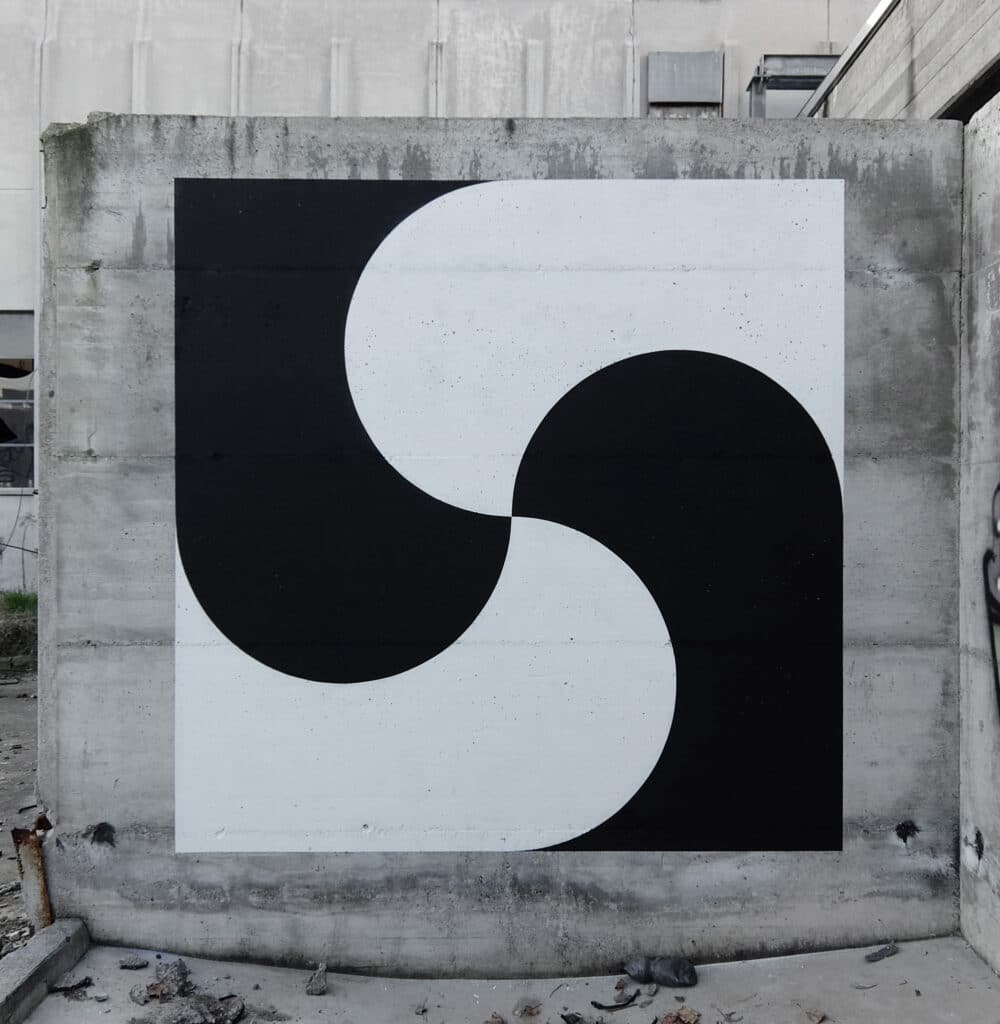
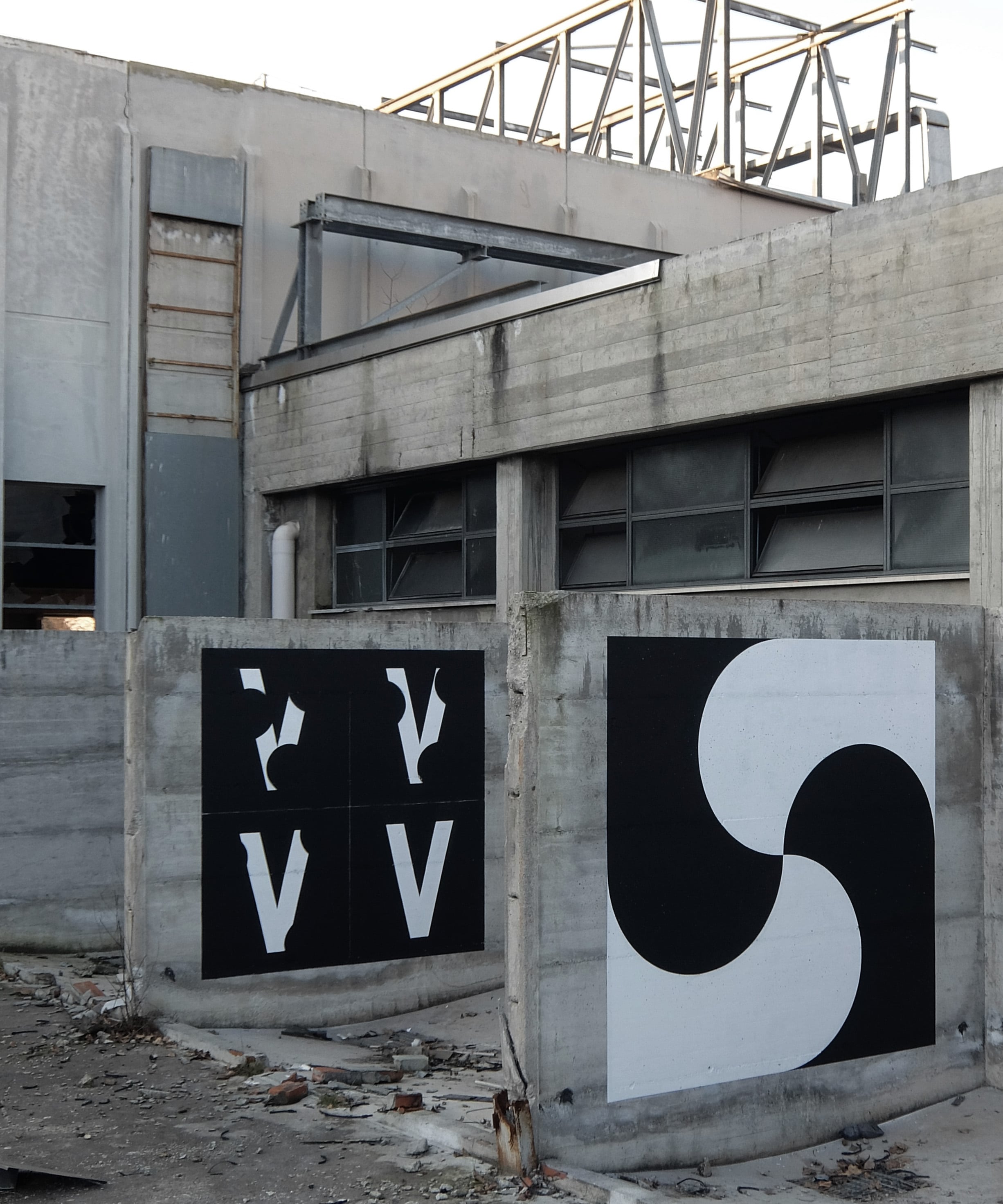
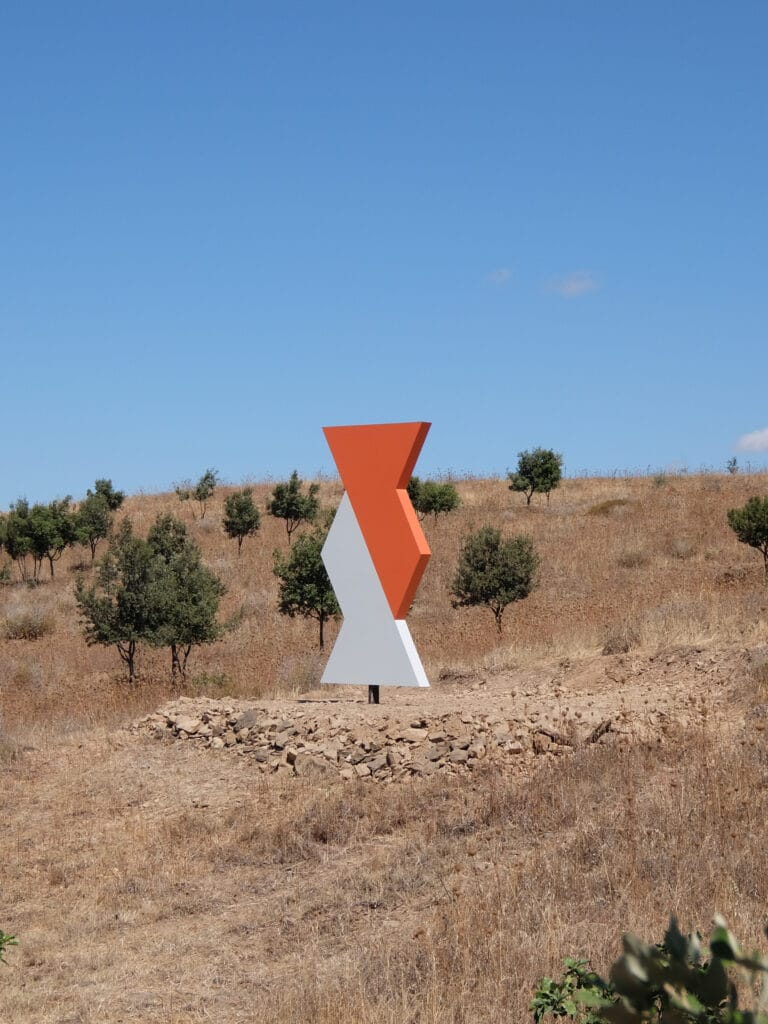
Studio works and the art market
Besides his outdoor works, CT creates art works in his studio especially for exhibitions. For each of his exhibitions he will bring found objects from the outside in the gallery space, as materials to paint on, materials to sculpt or photographs and therefore creating a link between his outdoor and indoor works. He participated at several festivals and group exhibitions since 2007 and is one of the first European minimal graffiti artist of the post-graffiti era.
Concerning the art scene and market CT was giving his point of view in an interview in 2014: “Some aspects I think are wrong, because you end up having a generation of works completely empty, only pure aesthetics, perhaps at a higher level than in the past because a person in six months or less, having a good eye, good communication skills, and good taste can become one of the artist that are attending many festivals and galleries. They are people who do not have a background in writing, graffiti, or street art, but still do exhibitions most of the time with people who actually have this background. I find it a bit wrong, and it was as if we were talking about different things. I think it’s vital that we don’t create a big cauldron to throw all the graphic designers who recently graduated with those coming out of the academy or with the ones that just make graffiti on the streets. We throw them all in this cauldron and out of it we make pseudo exhibitions with a pseudo geometric/pseudo comic aesthetic and then call them artists or vanguards. It makes no sense! And if someone tells me this is the reality of today, I say that we should use more boundaries and give names to things, otherwise we will lose the identity of this culture and there will be a generation of blog artists that will surely sell because the market is not lacking in these things. However, it is lacking that little bit of poetry that comes when one has lived a certain environment and certain situations.“
And CT continues to seek and create this little bit of poetry in his works in situ, even if he paints less outside than in previous years. Not because he doesn’t want to anymore, but because many old factories or abandoned places disappeared in his area. Nevertheless, at least once a week he tracks down places to paint and creates new pieces. In his formal research, the artist comes to the conclusion that now the letter C and T became the same, because his need to leave the comfort zone of lettering pushes him to rethink forms and shapes again and again, avoiding the unnecessary, to purify, and to originate surfaces with few information of his (past) letters, yet with the powerful visual essence and elegance of it.
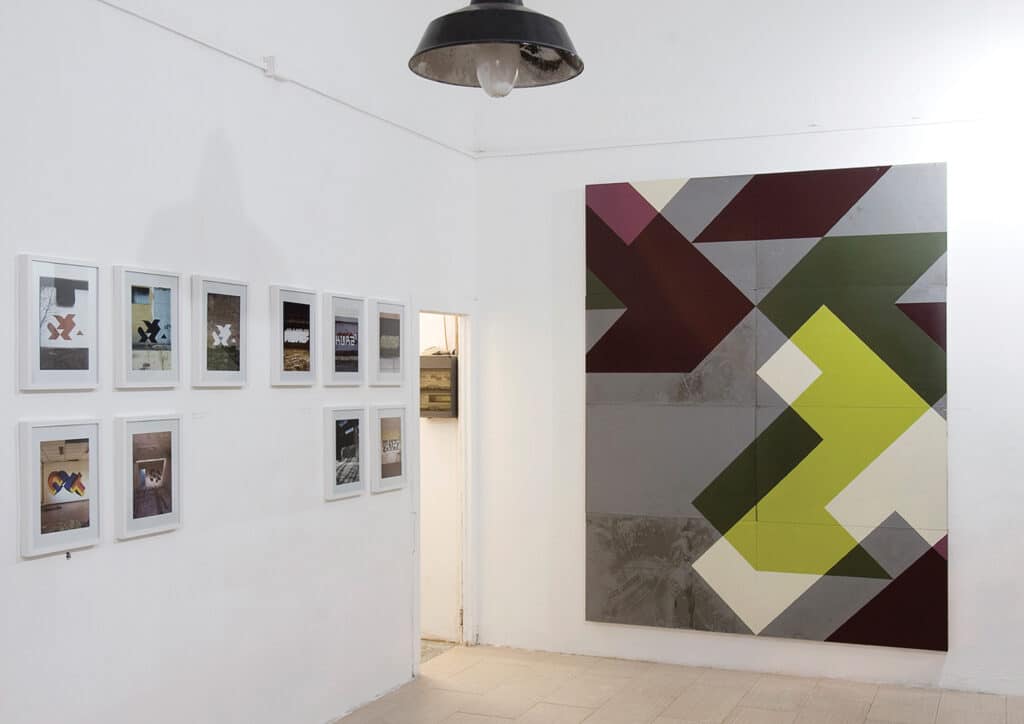
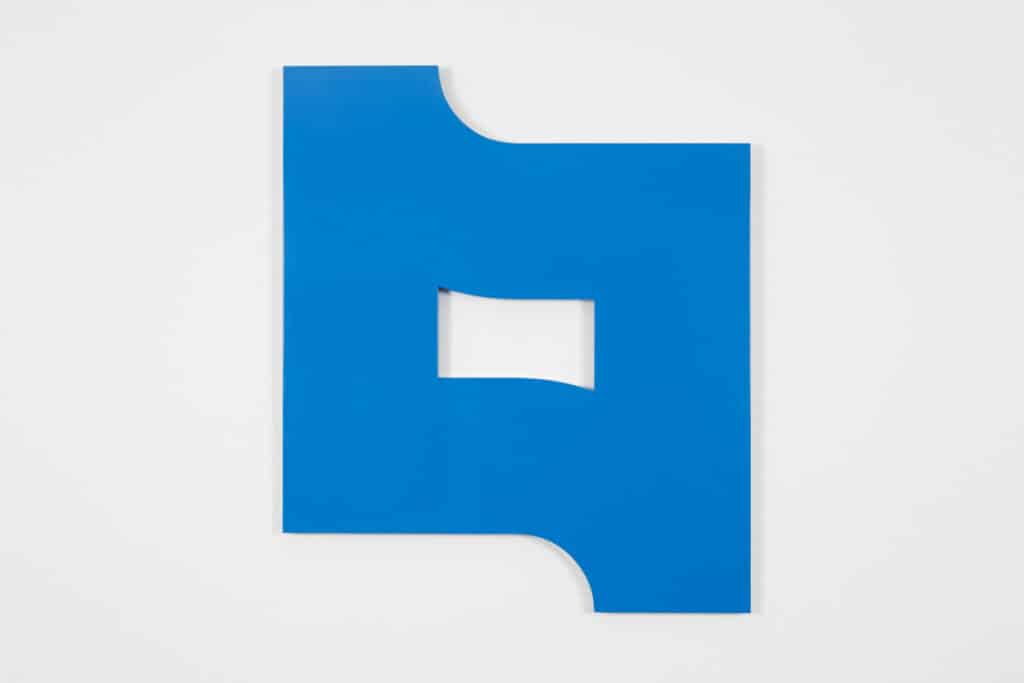
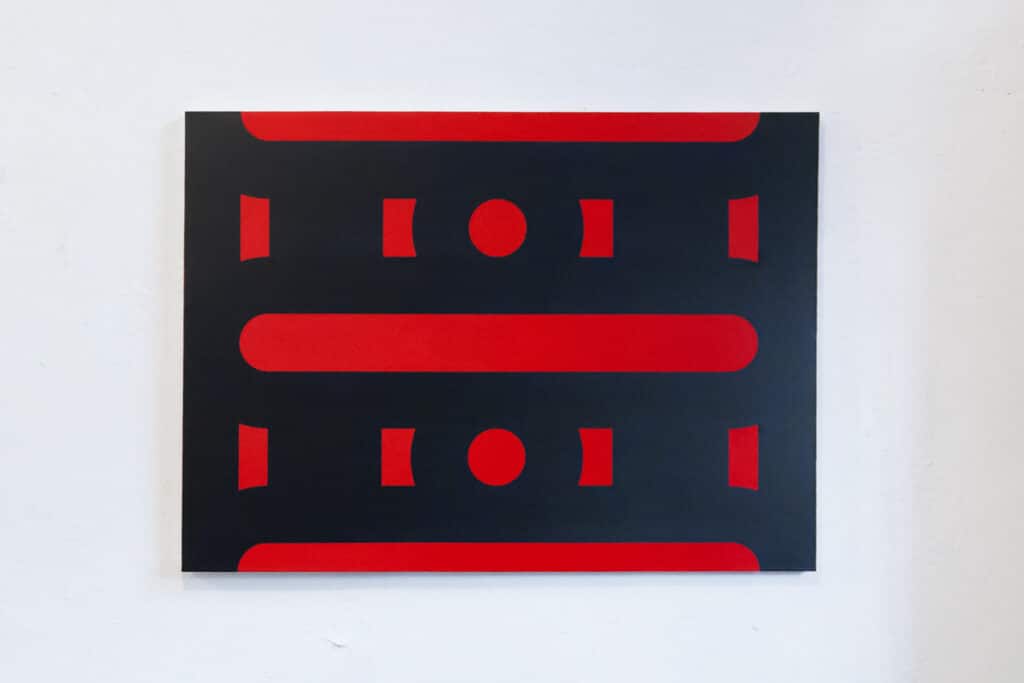
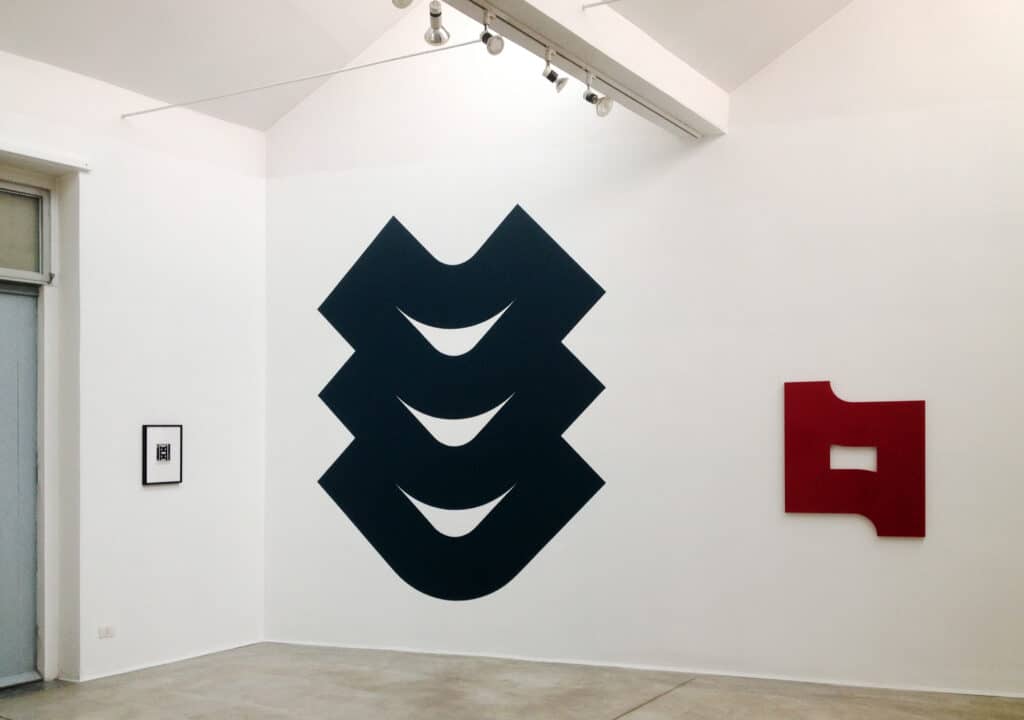
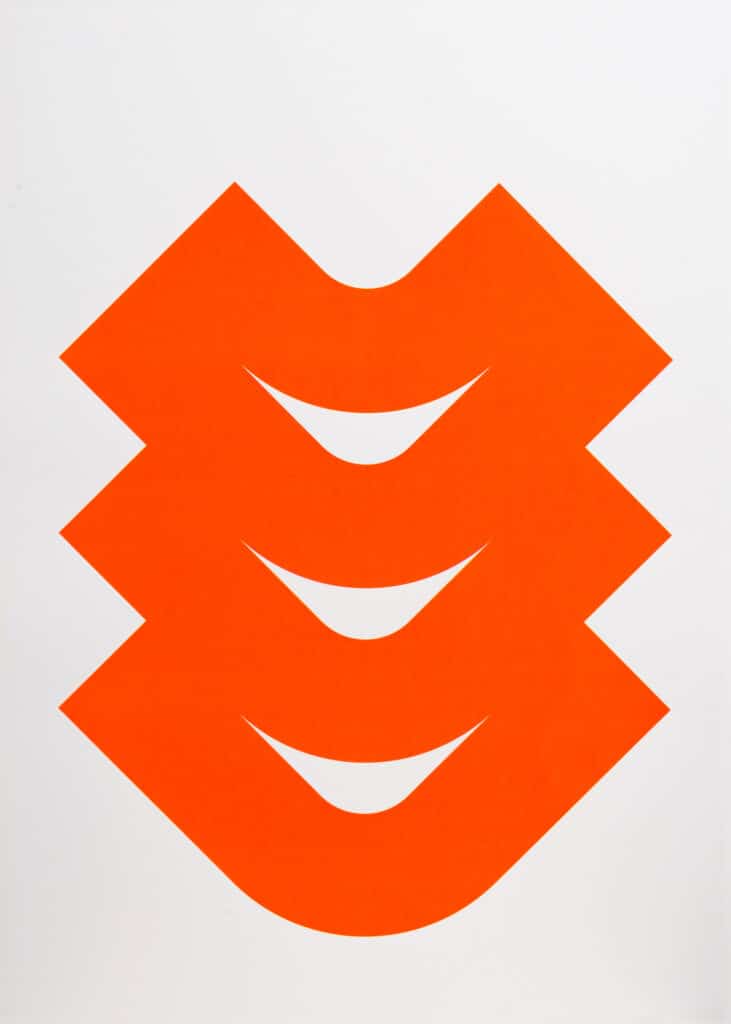
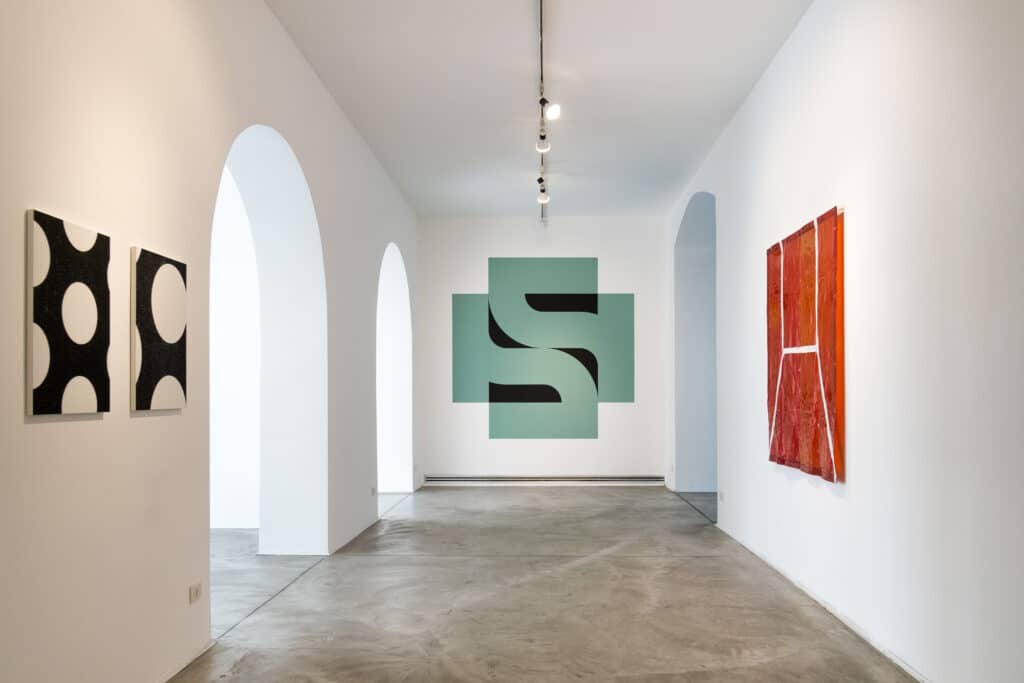
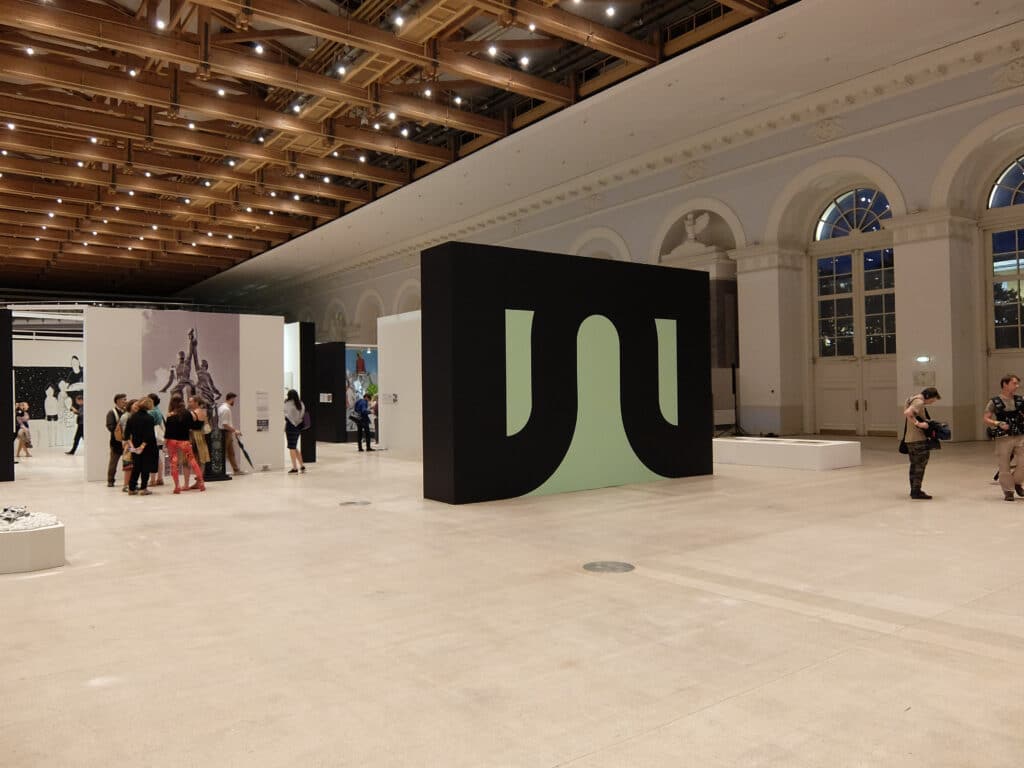
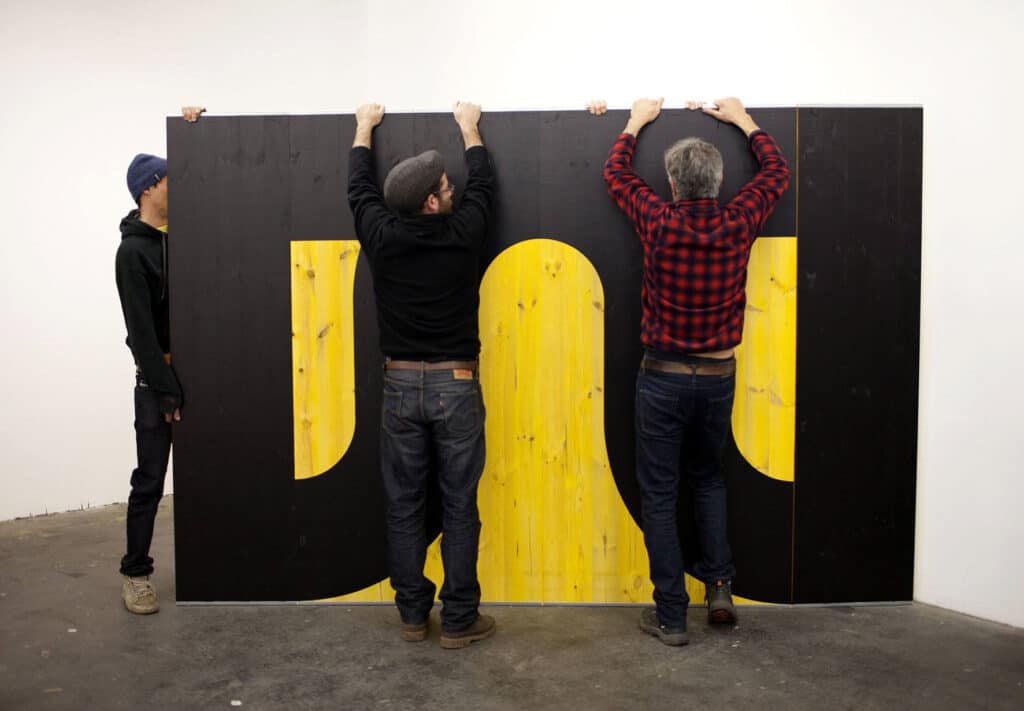
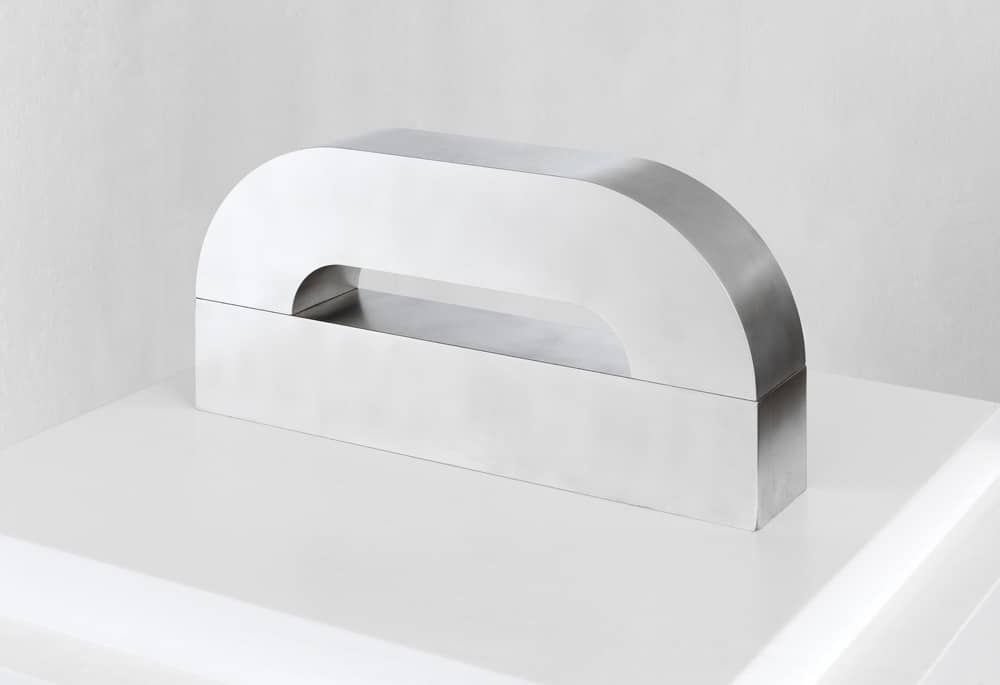
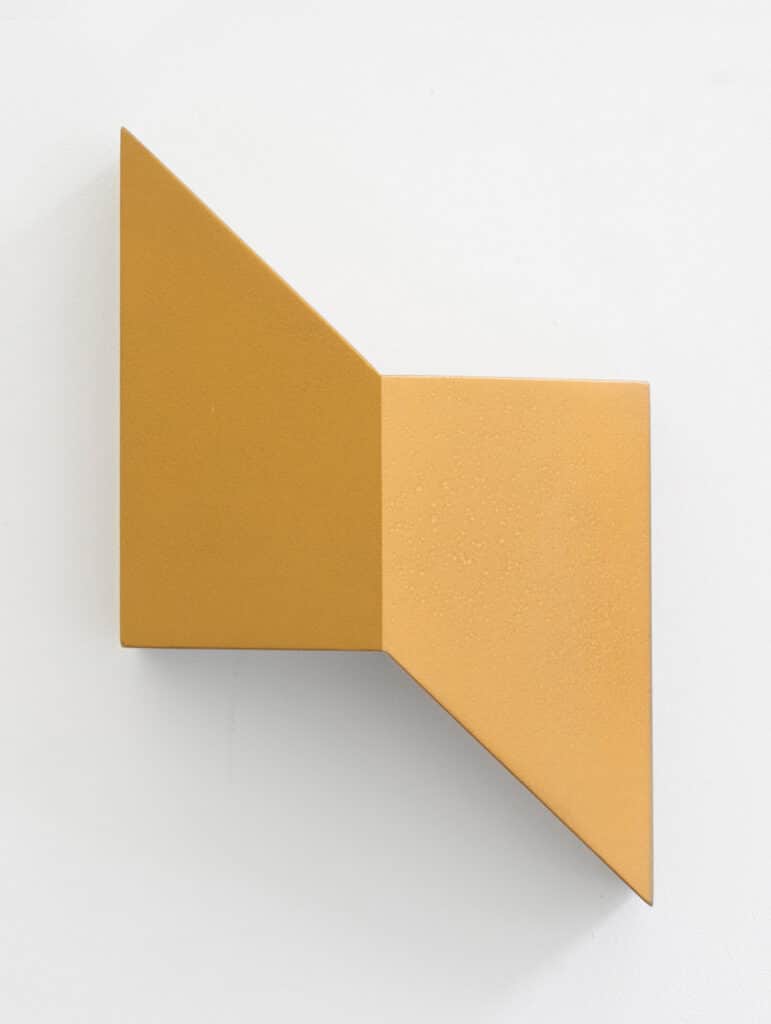
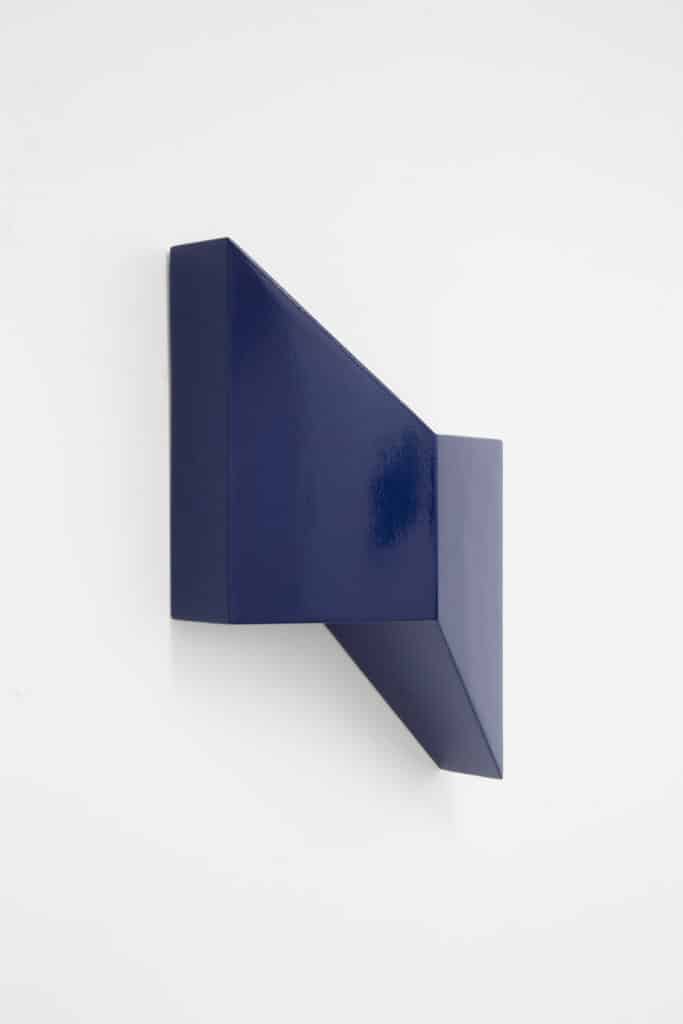
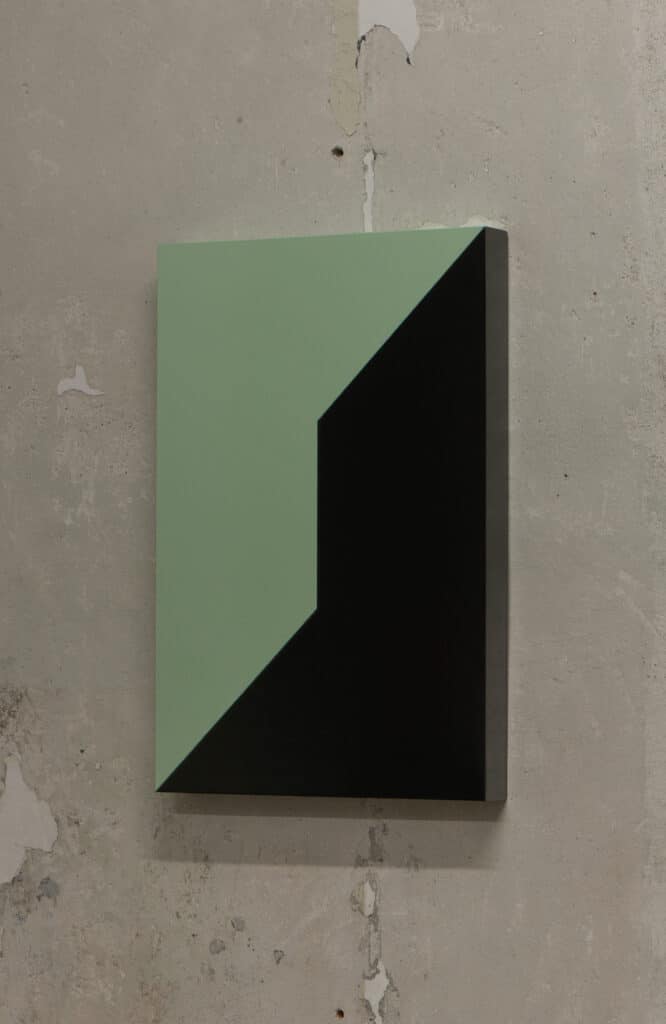
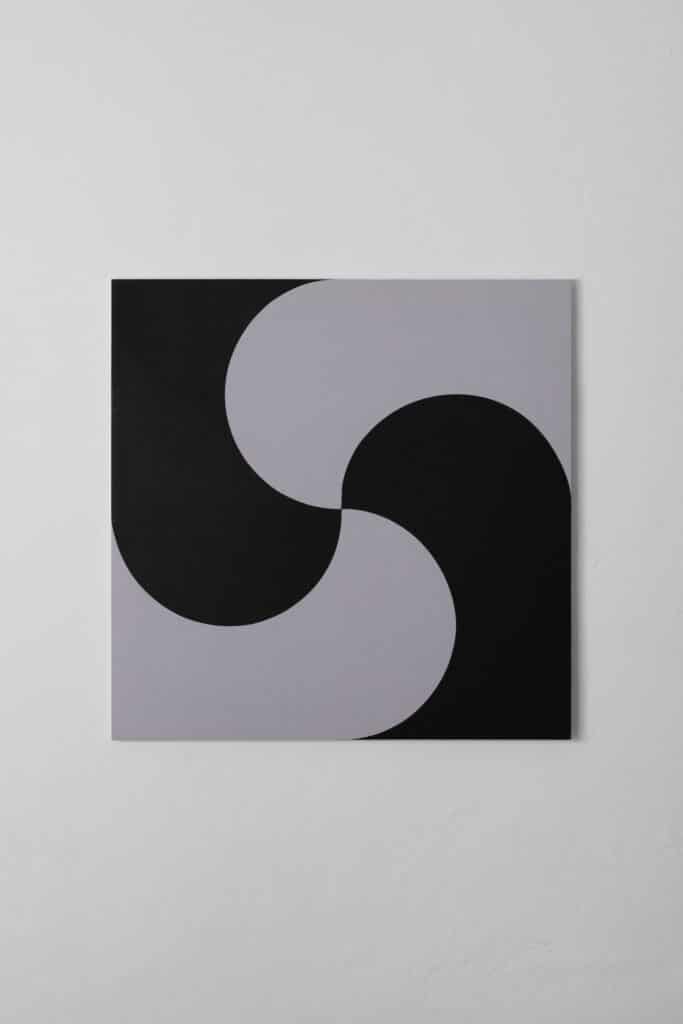
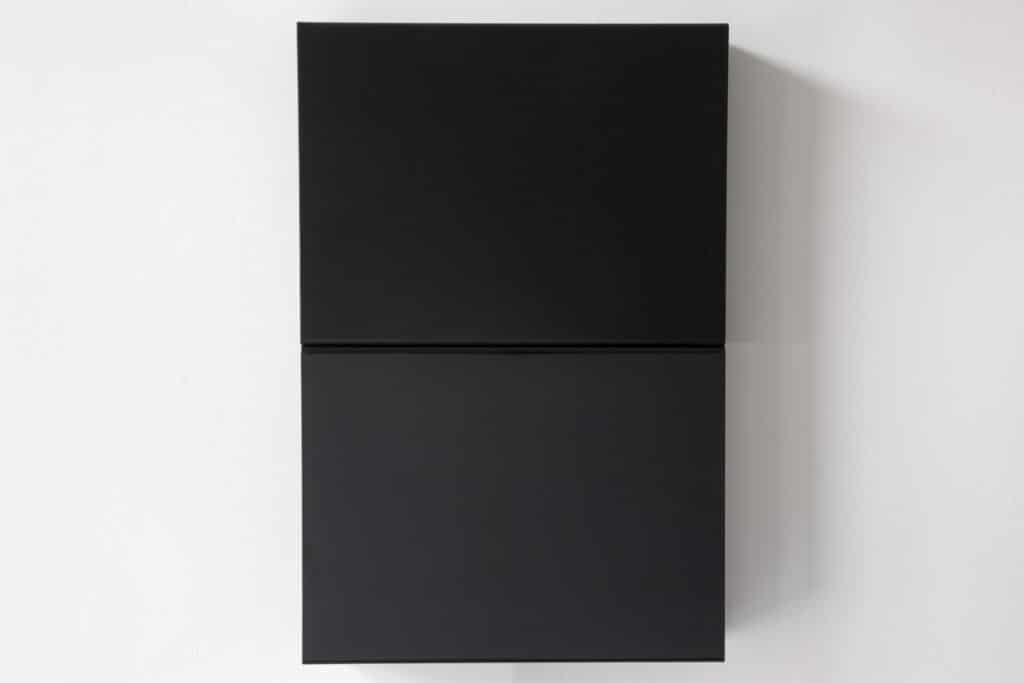
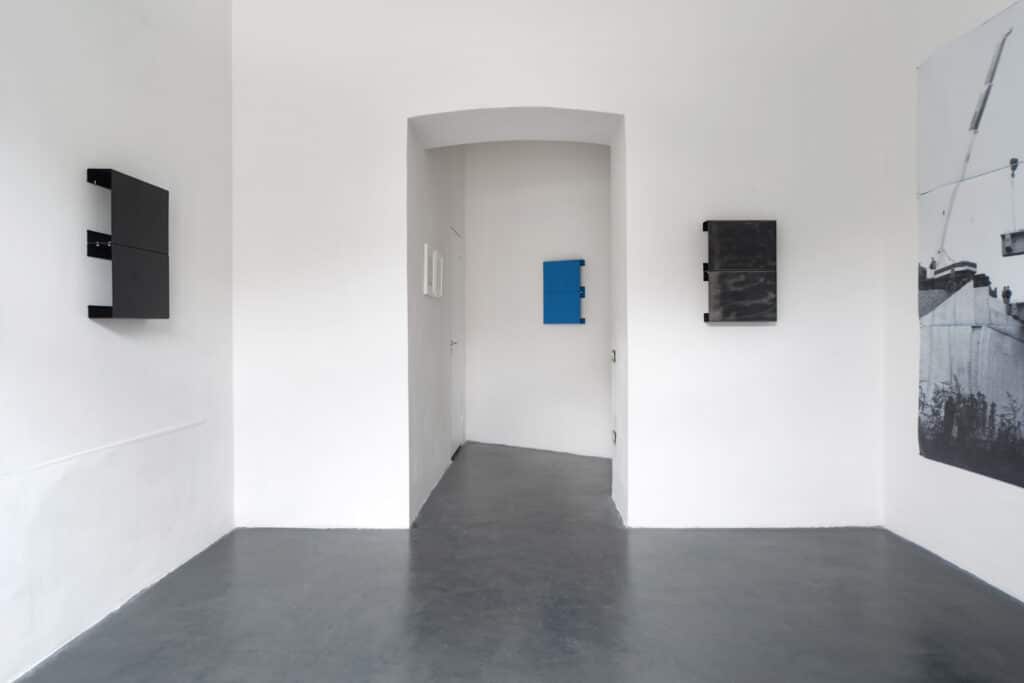
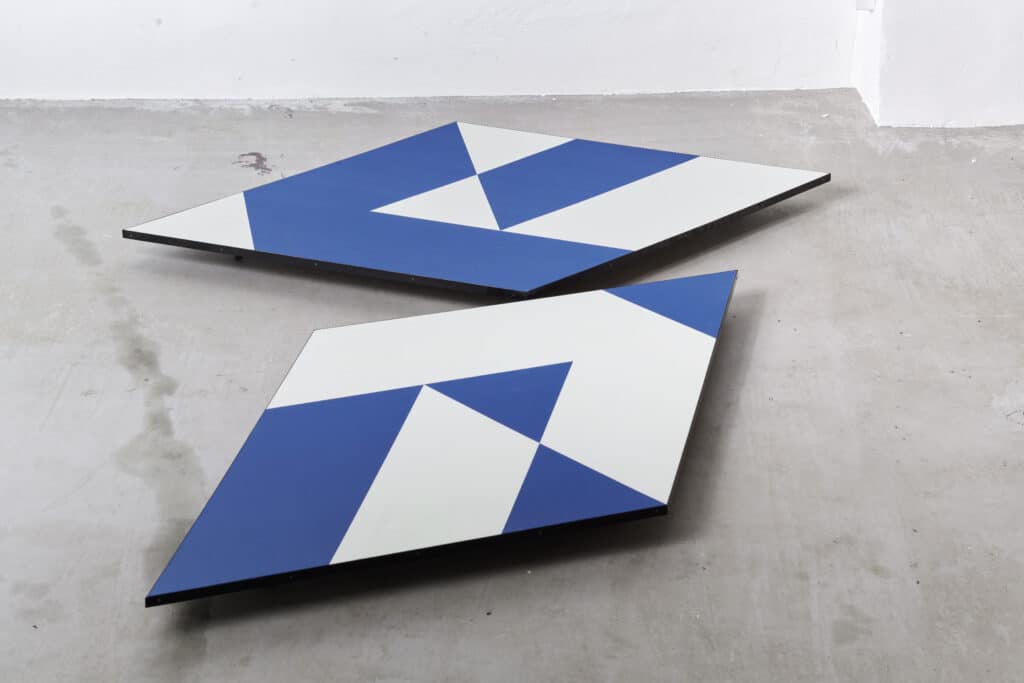
1,304 views
Categories
Tags:
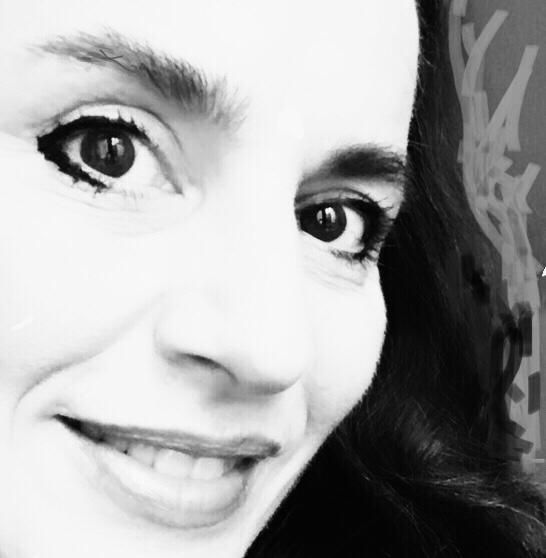
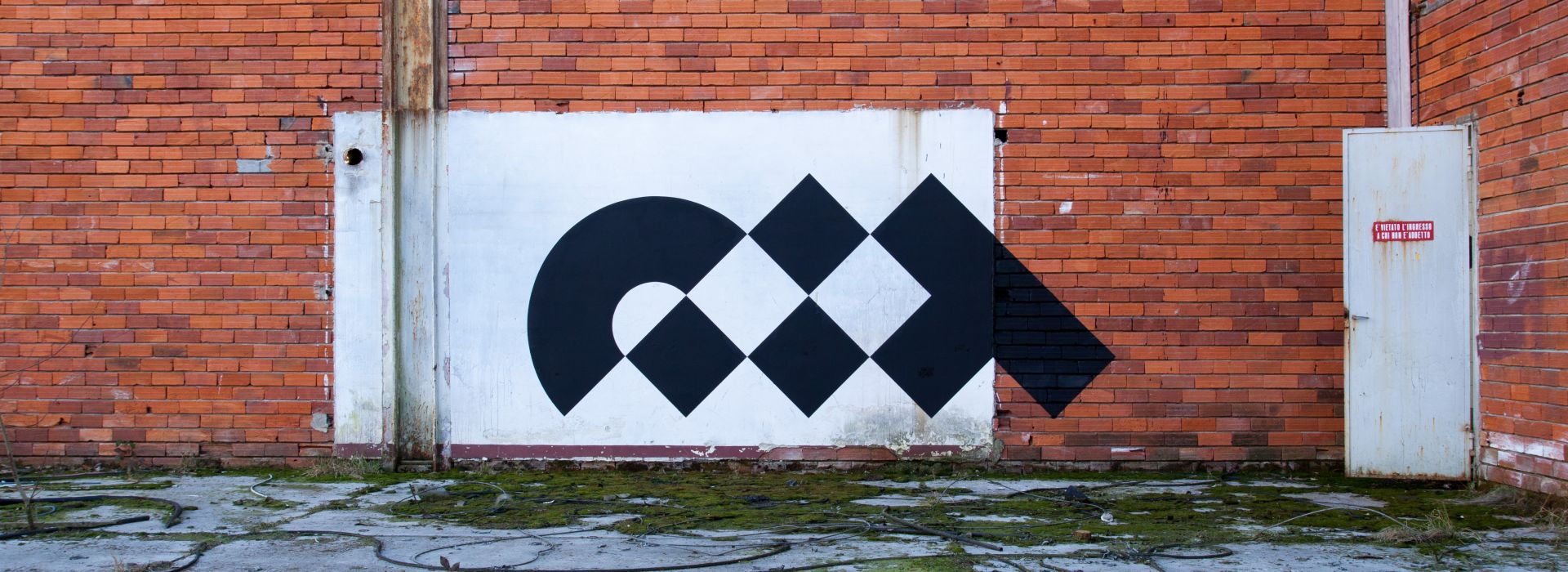
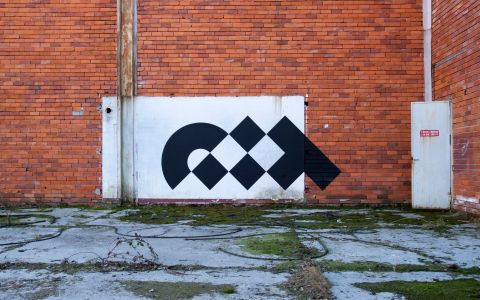
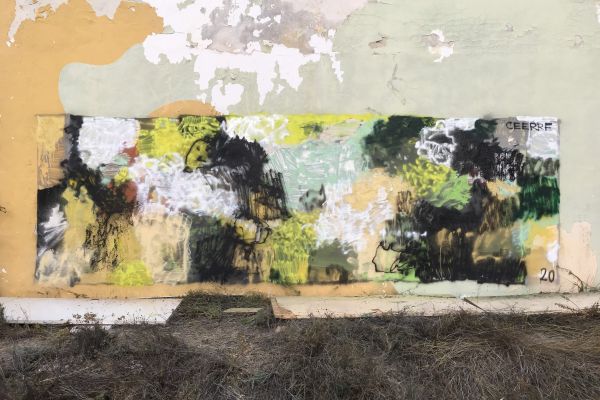
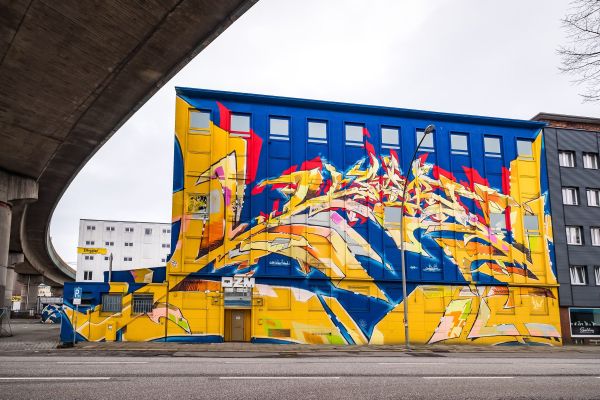
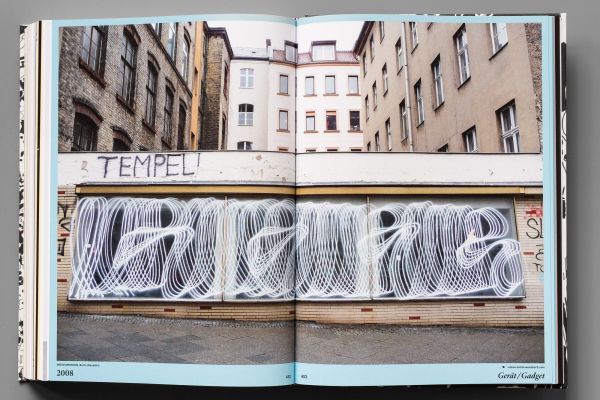
Leave a Reply